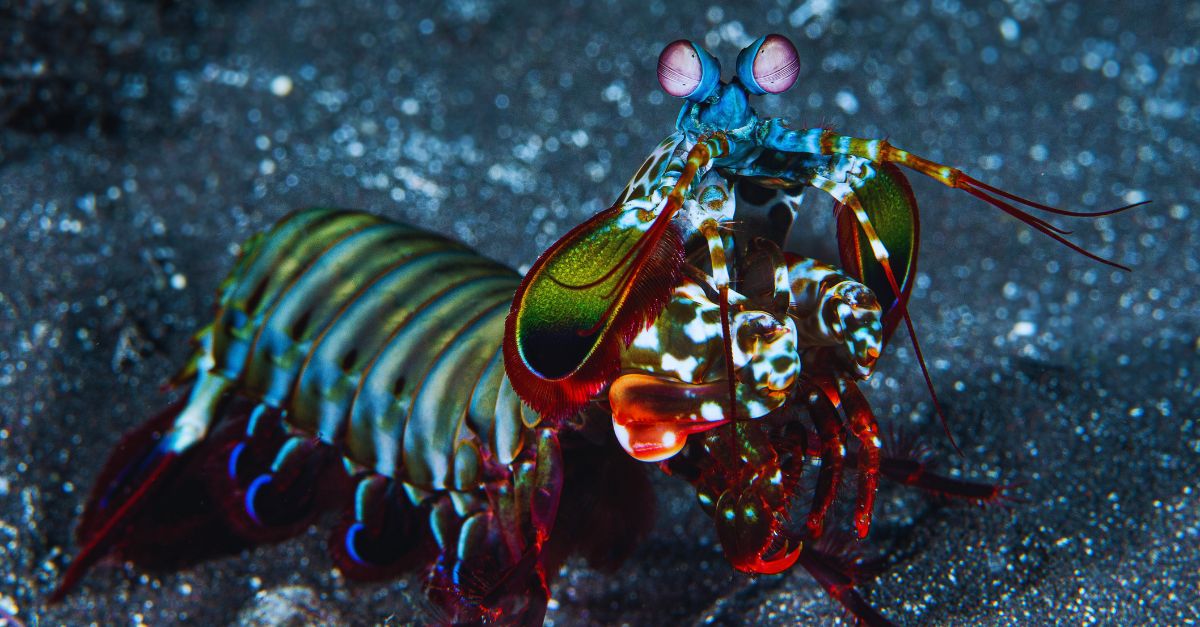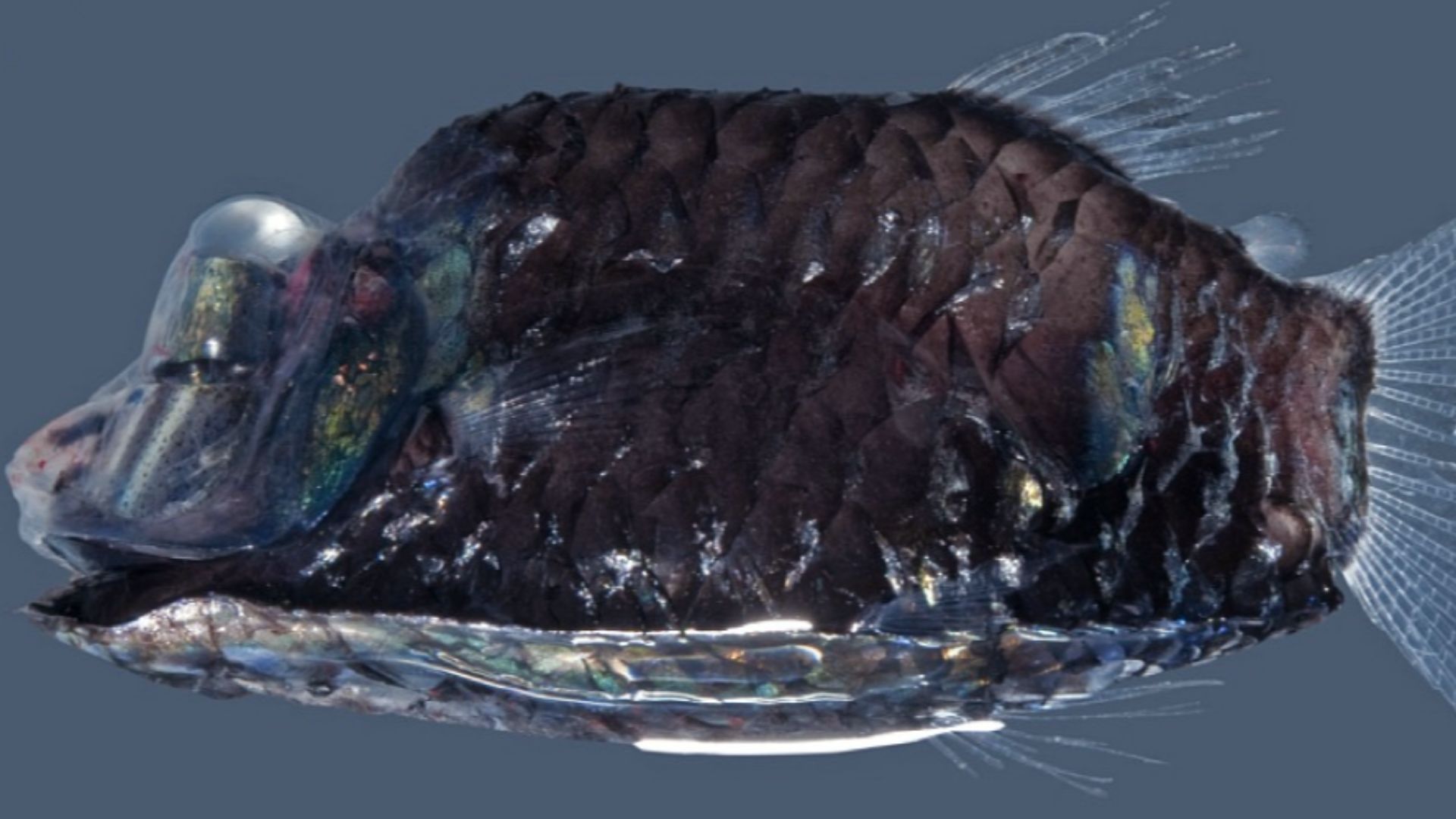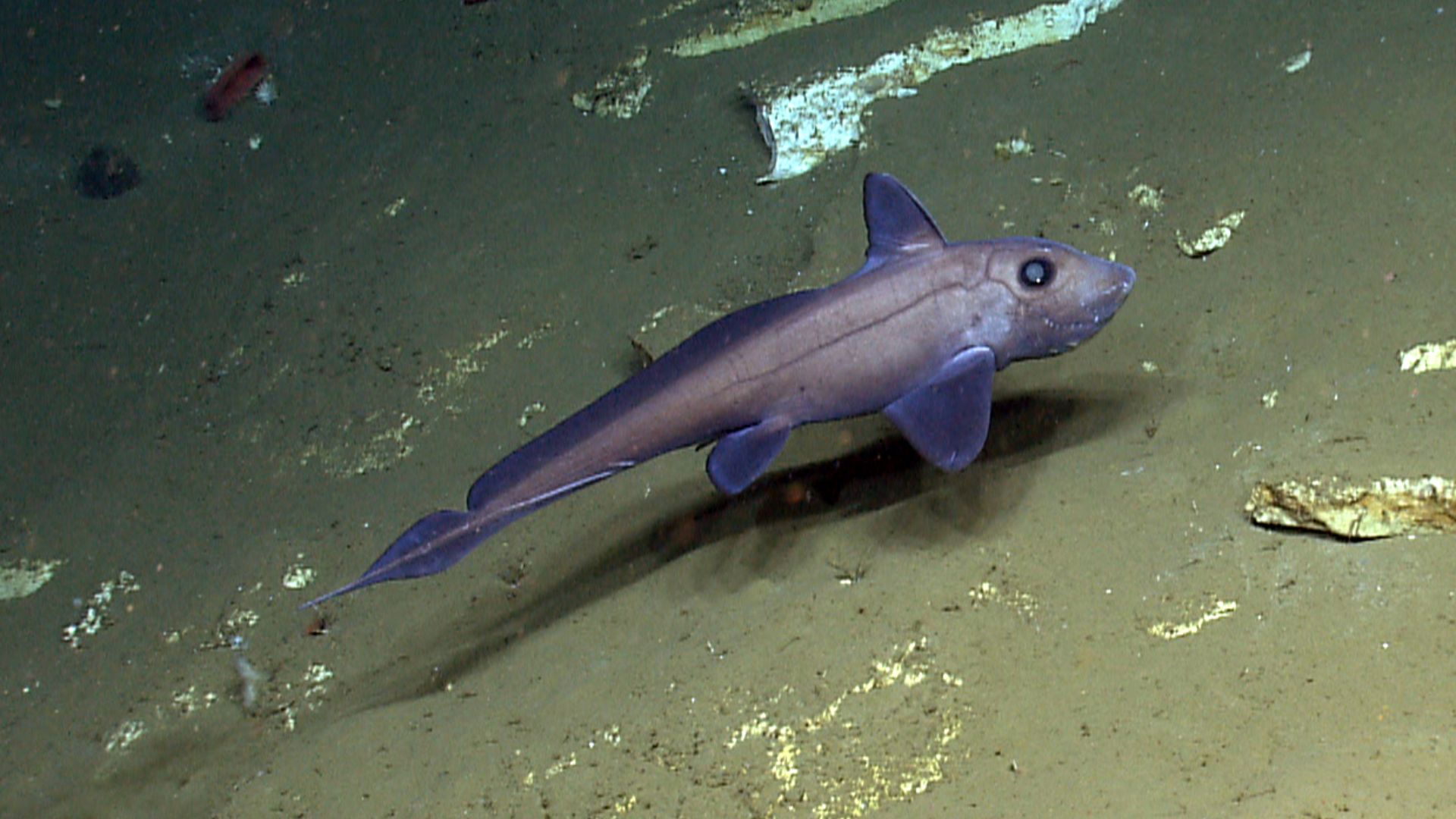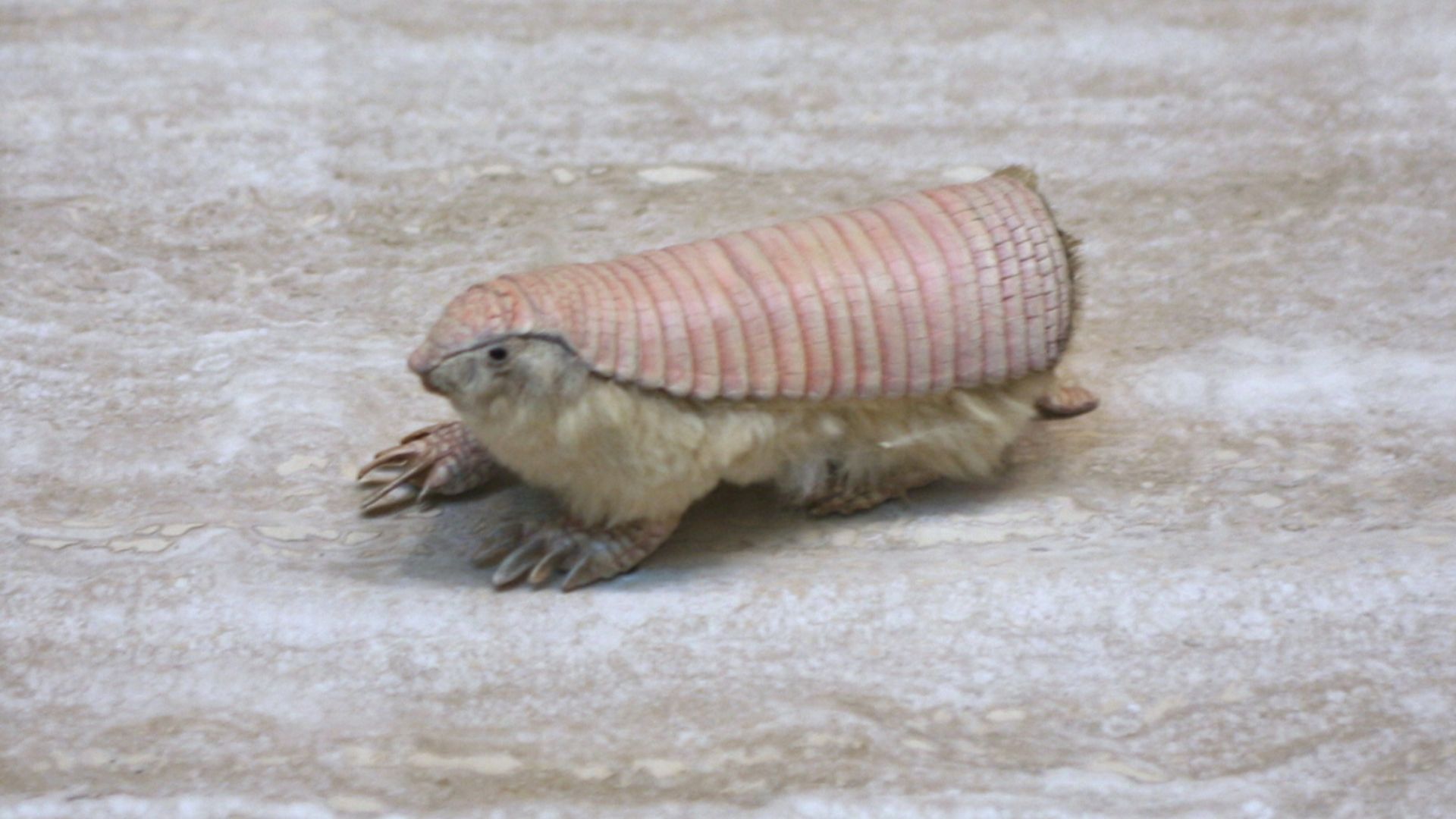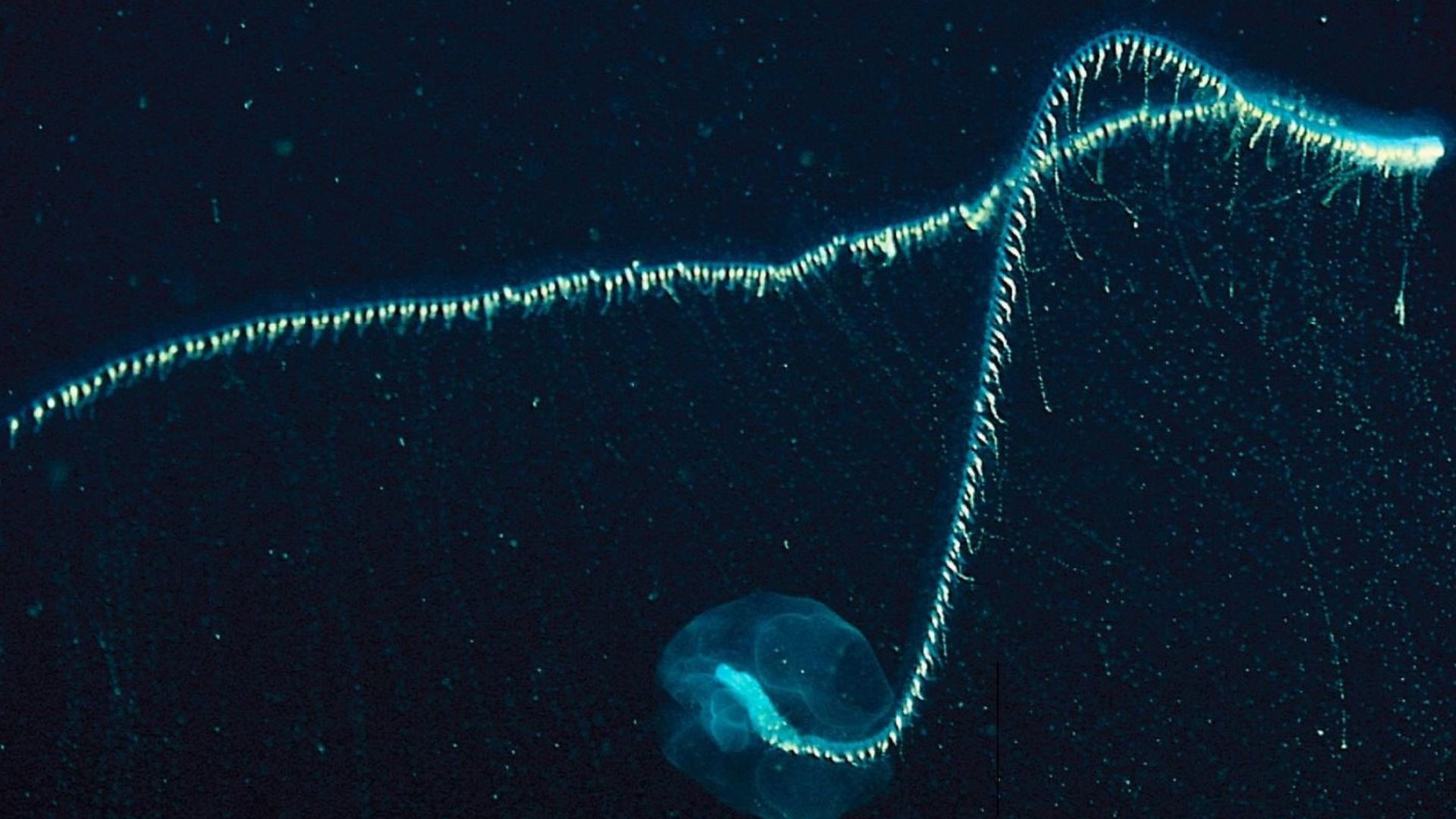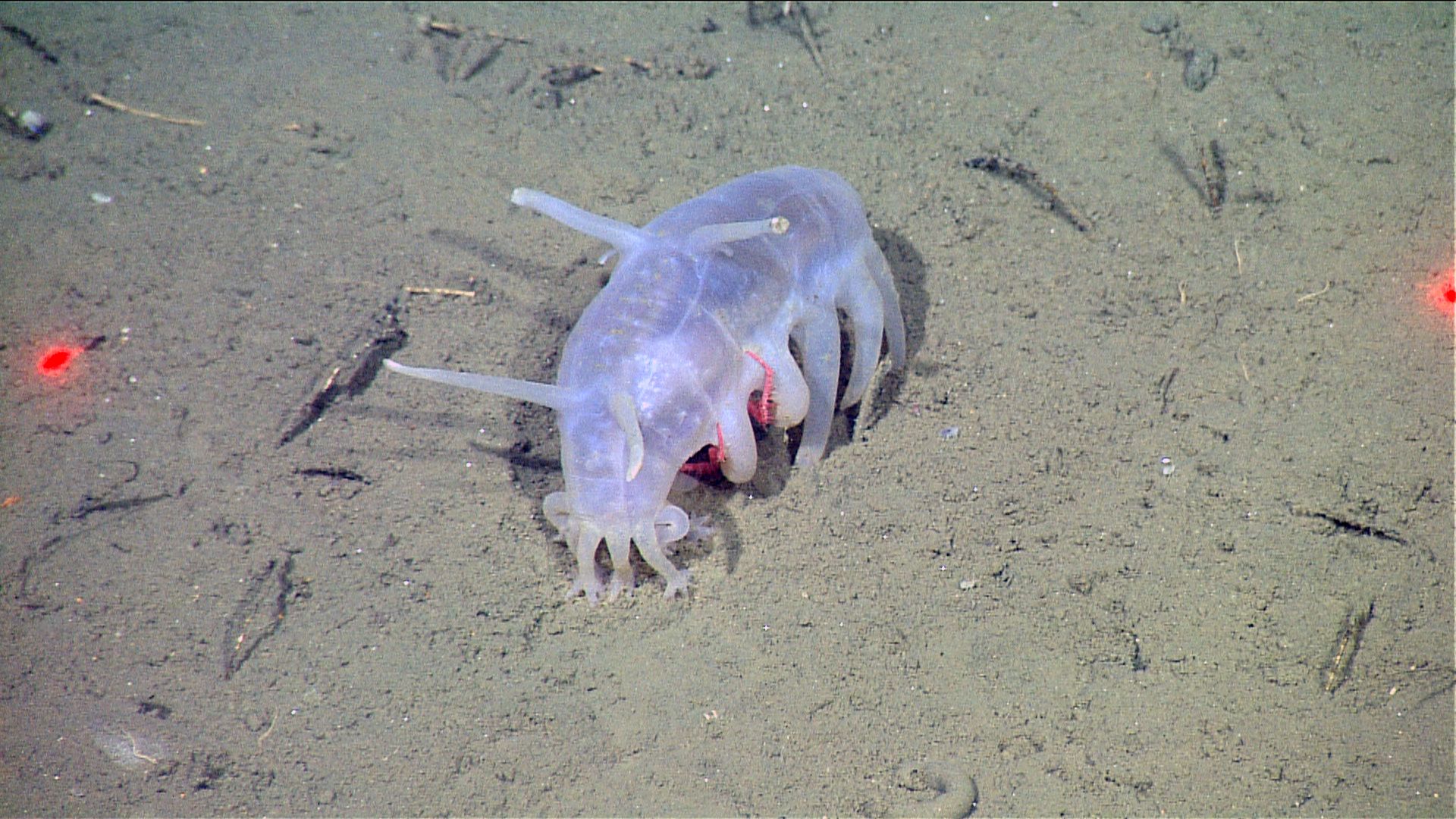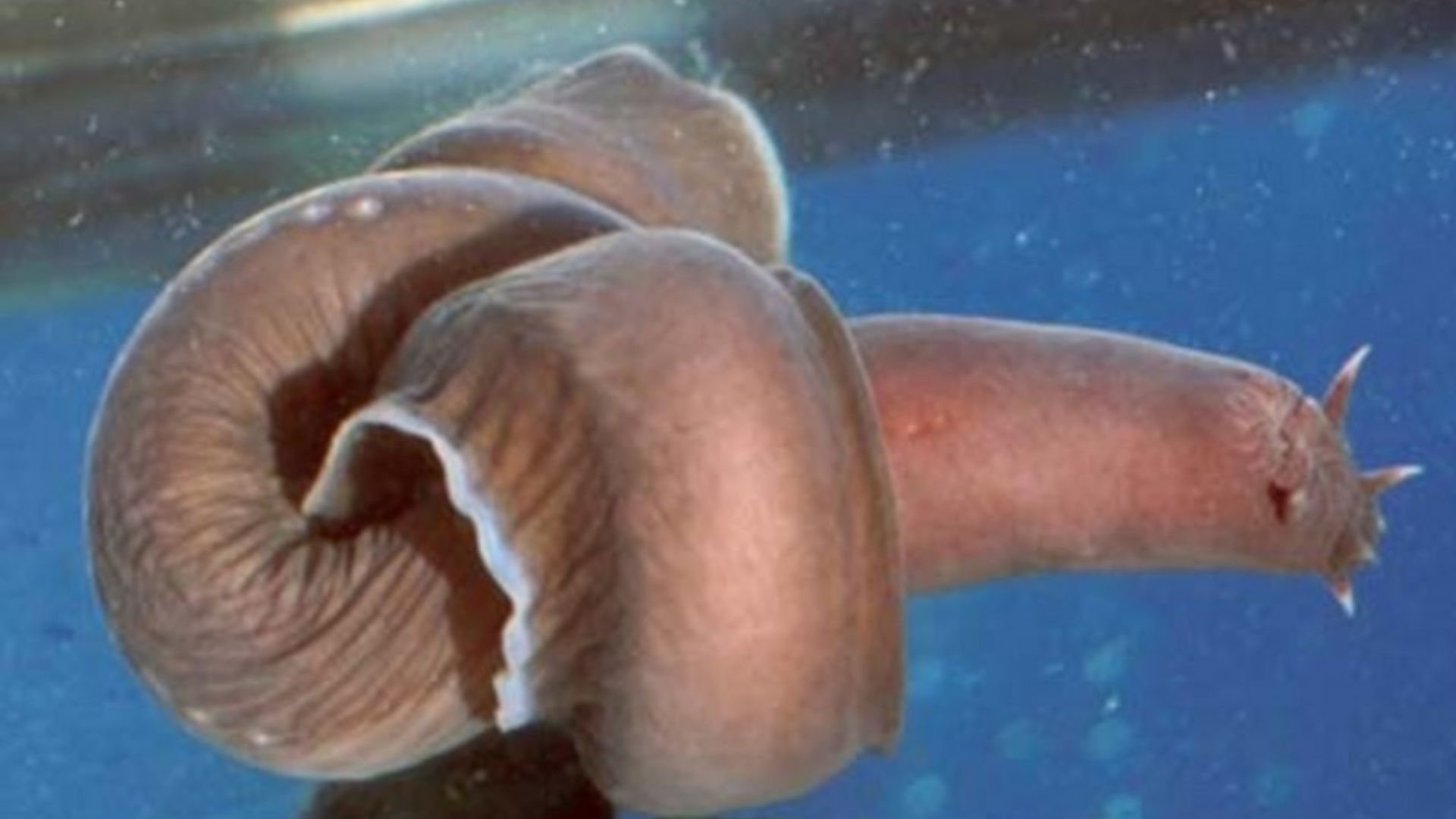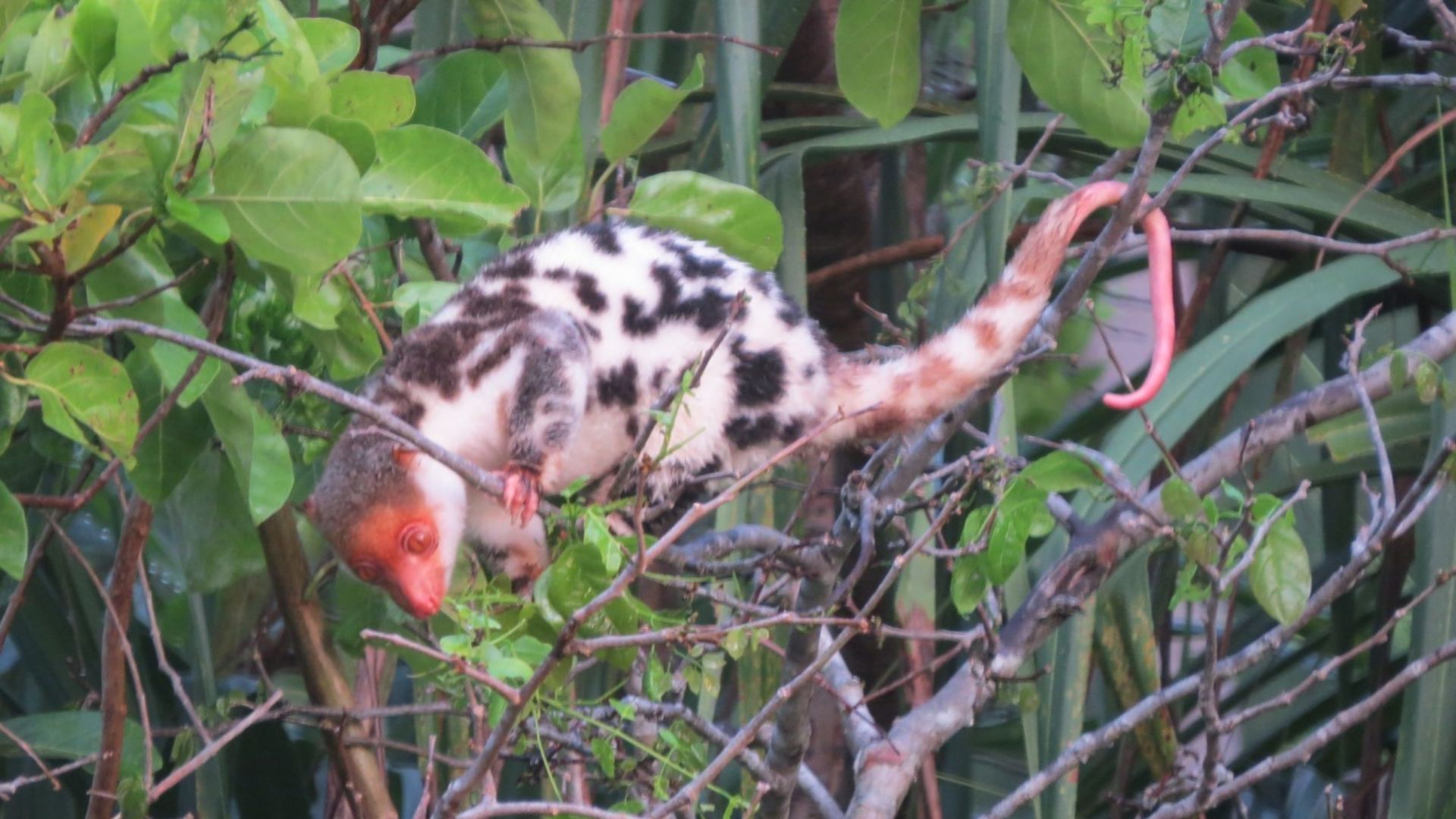Unbelievably Real
Nature keeps her oddest secrets well hidden. Some animals are so peculiar, that science missed them entirely until recently. Transparent heads, ultraviolet vision, bodies without lungs. Yes, these sound like cryptid descriptions but they do exist.
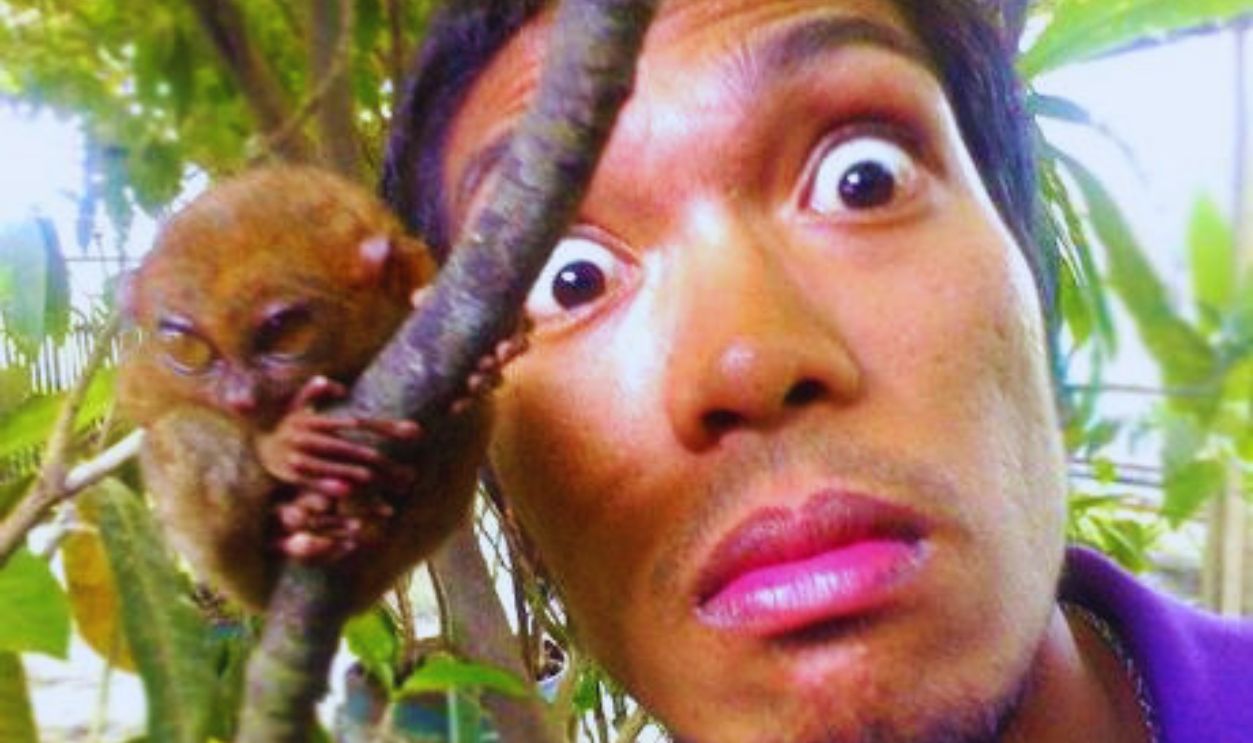
Barreleye Fish
Let’s talk about the Pacific barreleye fish that looks like something from a sci-fi movie. It has a transparent dome head that reveals its tubular, barrel-shaped eyes. These unusual eyes can rotate within their transparent shield, allowing them to look upward to spot the silhouettes of potential prey.
Barreleye Fish (Cont.)
Scientists were baffled for years about how this deep-sea dweller survived. However, ROV footage in 2004 confirmed that its fragile eyes are protected by the fluid-filled dome. Living at depths between 2,000–2,600 feet, the barreleye's green pigments help it detect the bioluminescence of jellyfish.
Atretochoana Eiselti
Apparently, this creature was rediscovered in 2011 in the Madeira River after being known only from two preserved museum specimens from the 1800s. Despite its unfortunate nickname of a snake, this animal isn't a snake at all but a giant caecilian.
 Atretochoana eiselti or Szlenakonda by Animal World
Atretochoana eiselti or Szlenakonda by Animal World
Atretochoana Eiselti (Cont.)
The Atretochoana Eiselti is the largest known tetrapod without lungs, breathing entirely through its skin. Its flattened head contains numerous blood vessels and an oversized choroid plexus. These adaptations allow it to extract sufficient oxygen from its aquatic habitat while moving with almost no eyesight.
 Atretochoana eiselti or Szlenakonda by Animal World
Atretochoana eiselti or Szlenakonda by Animal World
Ghost Shark (Chimaera)
Known to science since the 19th century but rarely observed alive, the ghost shark made headlines in 2016. Apparently, some researchers captured the first footage of a living specimen in its natural habitat that year. It has a skeleton made of cartilage rather than bone.
Ghost Shark (Chimaera) (Cont.)
This ancient lineage of fish seems designed to challenge our expectations of vertebrate anatomy. Their phantom-like appearance and tendency to vanish into oceanic darkness perpetuated their mystique for centuries. Though scientifically documented, they remained effectively mythological until recently.
 The Mysterious Ghost Shark by Natural World Facts
The Mysterious Ghost Shark by Natural World Facts
Star-Nosed Mole
Well, the star-nosed mole's most distinctive feature isn't just bizarre-looking. It's also a very sensitive touch organ of the animal kingdom. Those 22 fleshy tentacles contain over 25,000 sensory receptors, which permits this subterranean mammal to identify and gallop food quicker than the human eye can track.
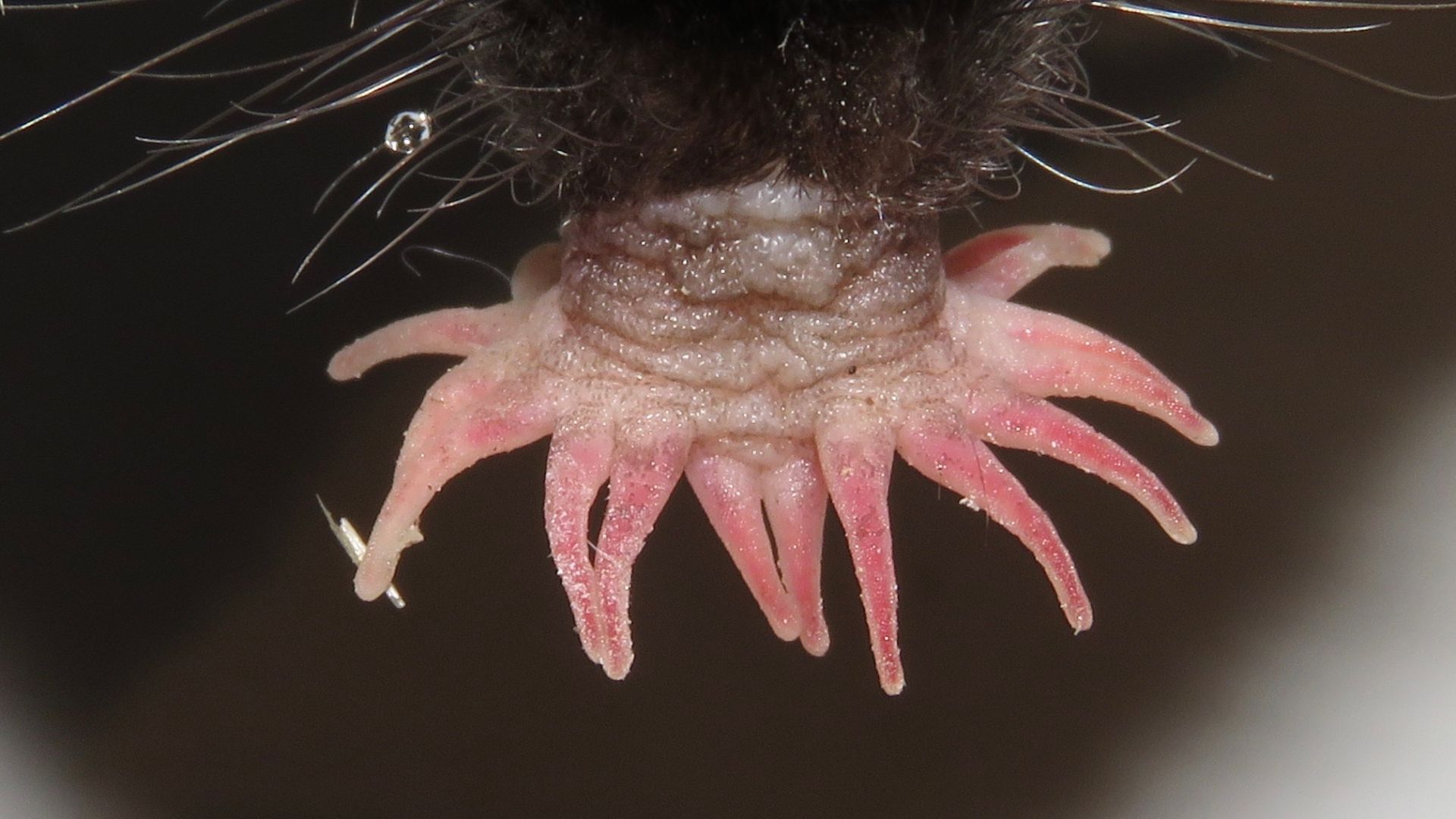 Dan MacNeal, Wikimedia Commons
Dan MacNeal, Wikimedia Commons
Star-Nosed Mole (Cont.)
Found in the wetlands of northeastern North America, it can smell underwater by exhaling air bubbles onto objects and then inhaling them back to capture scents. Research published in Nature revealed that the mole's star-shaped nose also detects seismic waves and may sense electrical fields from prey.
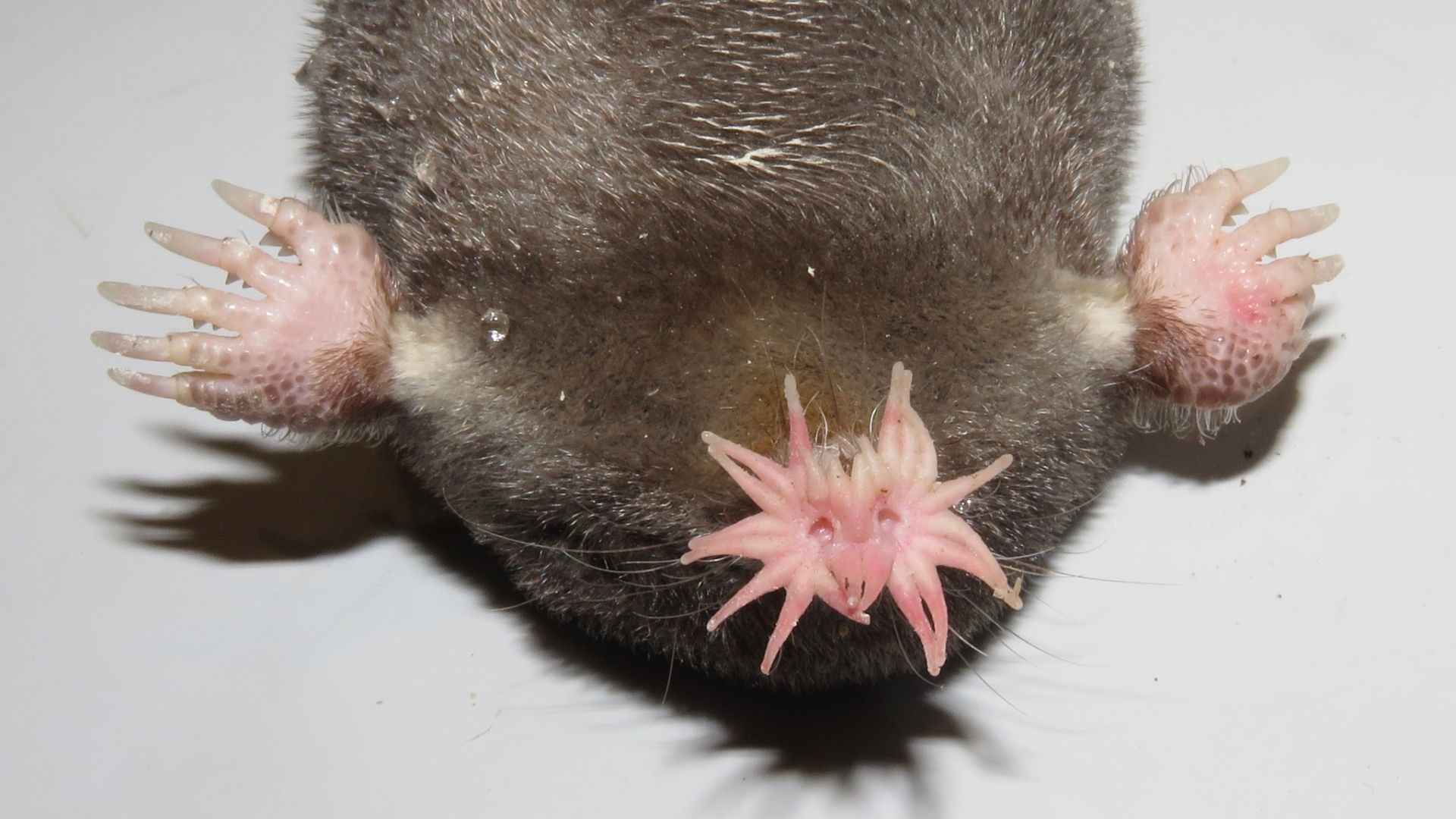 Dan MacNeal, Wikimedia Commons
Dan MacNeal, Wikimedia Commons

History's most fascinating stories and darkest secrets, delivered to your inbox daily.
Kiwa Hirsuta
In 2005, scientists found the "yeti crab" hanging out near hydrothermal vents in the South Pacific Ocean. This crab has a body and claws that are covered in soft, blonde hair-like structures (setae). Apparently, the setae are home to bacteria that help detoxify harmful minerals.
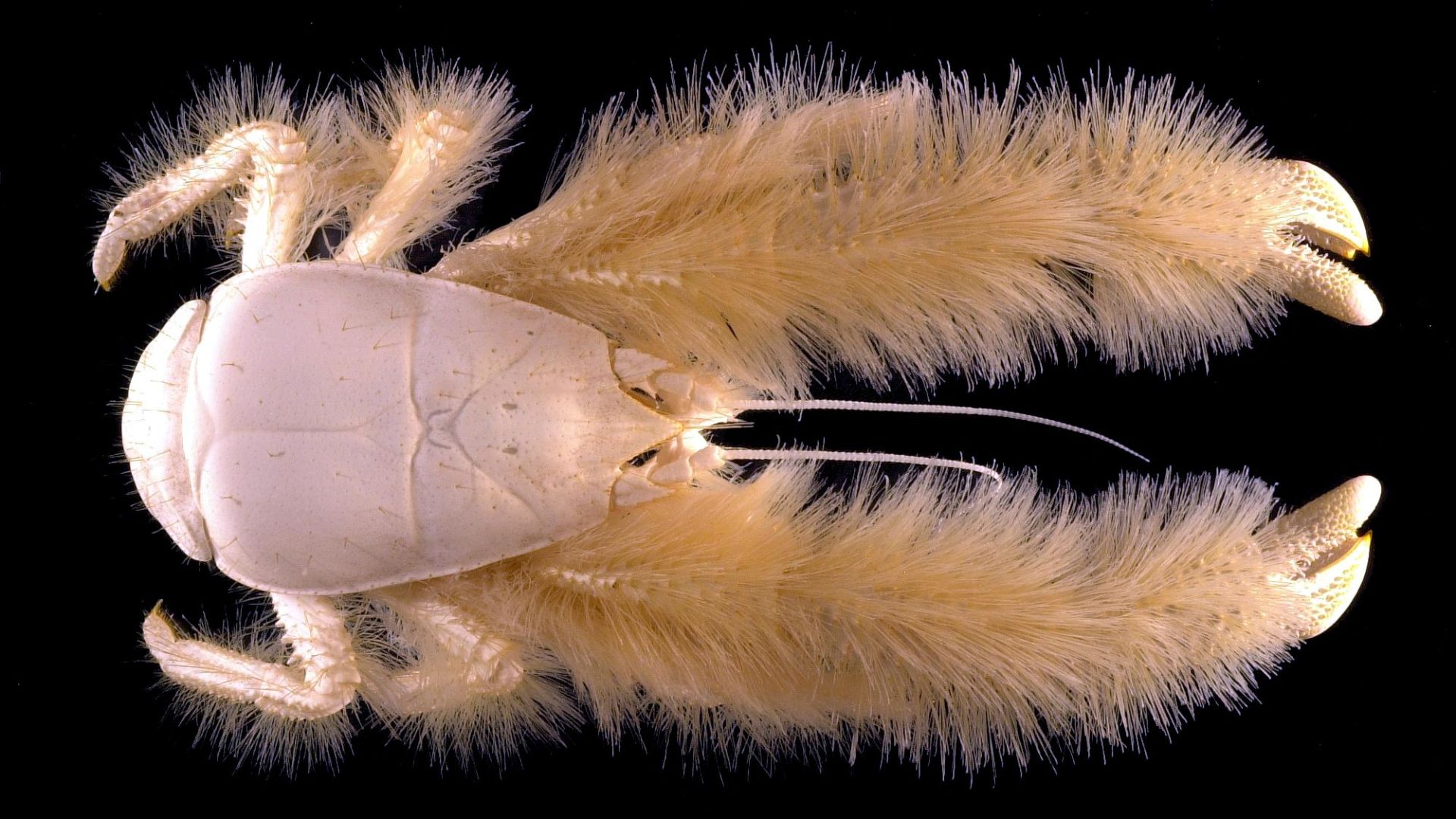 Alexis Fifis (Ifremer), null, Wikimedia Commons
Alexis Fifis (Ifremer), null, Wikimedia Commons
Kiwa Hirsuta (Cont.)
As a crustacean, it has no functioning eyes but has developed an unusual farming technique. Researchers observed that Kiwa hirsuta performs a rhythmic “dance” by waving its hairy claws over thermal vents to cultivate the bacteria, which it then scrapes off and eats.
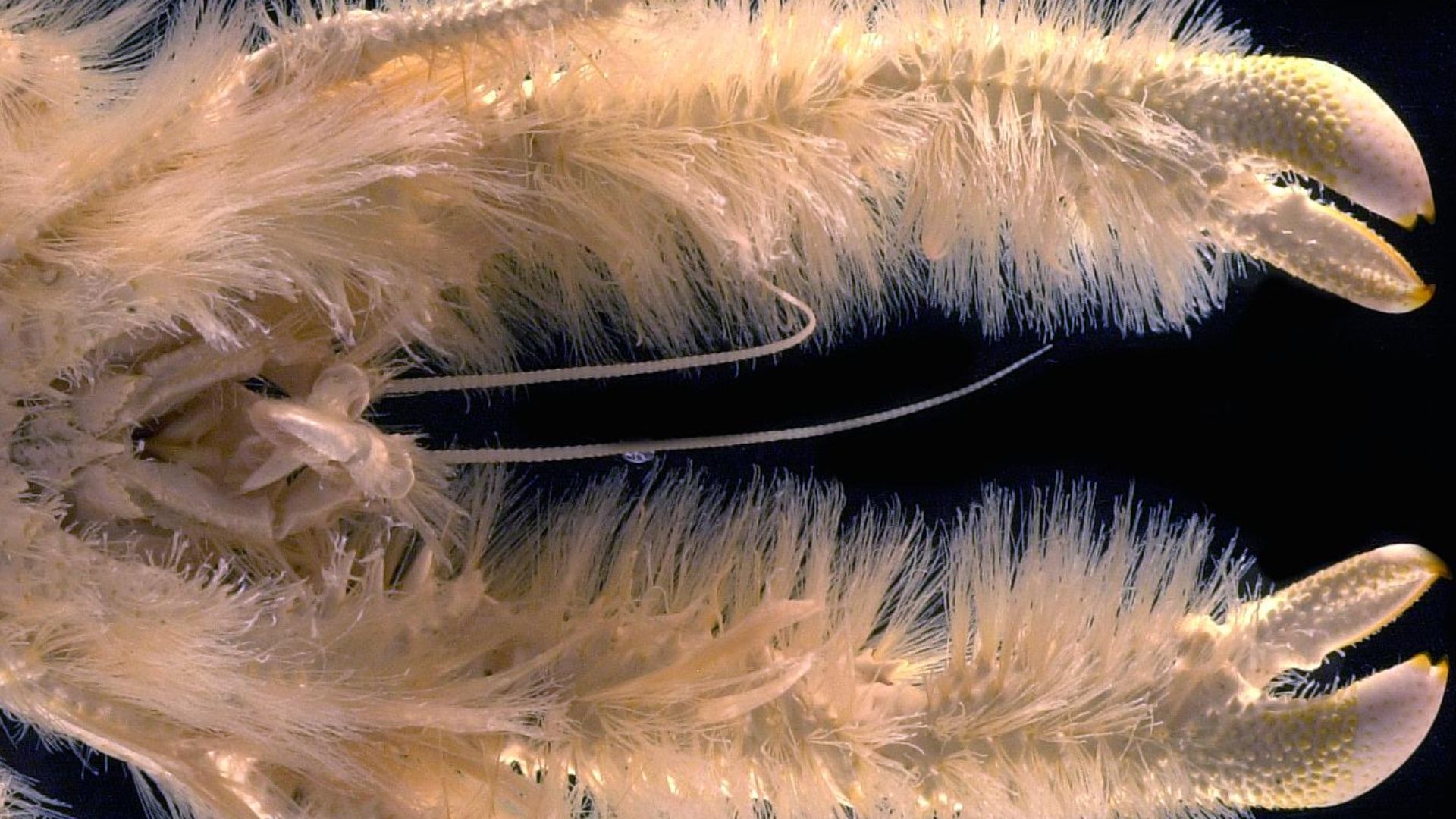 Alexis Fifis (Ifremer), null, Wikimedia Commons
Alexis Fifis (Ifremer), null, Wikimedia Commons
Hainan Gibbon
Talk about the rarest primate on Earth. This one is restricted to a small single patch of forest. Their haunting, melodic calls, once heard across the island, now echo through just one small valley. Some communities considered their vocalizations to be voices of forest spirits.
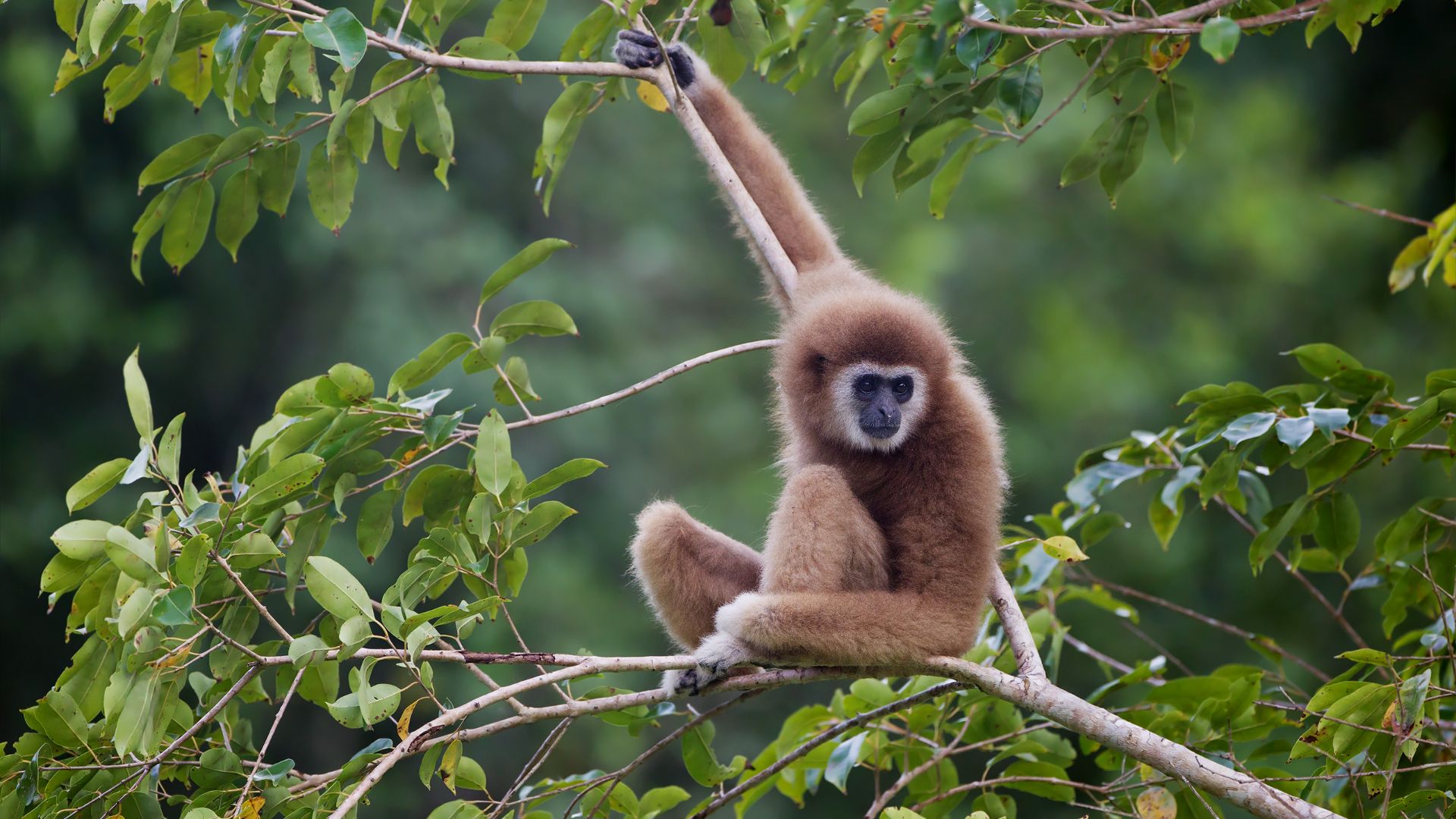 JJ Harrison (jjharrison89@facebook.com), Wikimedia Commons
JJ Harrison (jjharrison89@facebook.com), Wikimedia Commons
Hainan Gibbon (Cont.)
For decades, these gibbons were thought extinct until rediscovered in the 1980s. Their ability to move through forest canopies by swinging at speeds up to 35 mph lets them vanish at the first sign of humans. This combination of rarity and near-mythical status parallels many famous cryptids.
 Hainan gibbon population grows to 42 amid Chinese conservation push by CGTN
Hainan gibbon population grows to 42 amid Chinese conservation push by CGTN
Pink Fairy Armadillo
Standing 3.5 to 4.5 inches long, the pink fairy armadillo is the tiniest armadillo species in the world. Its peculiar pink color comes from blood vessels showing through its thin shell. Also, with those massive front claws, it can bury itself completely in seconds.
Pink Fairy Armadillo (Cont.)
This elusive mammal has remained one of zoology's greatest enigmas since its discovery in 1825. Native only to central Argentina's dry grasslands and sandy plains, the pink fairy armadillo has never successfully been kept in captivity. Most specimens die within days due to stress.
 Pink Fairy Armadillos are Pint Sized Tanks by Animalogic
Pink Fairy Armadillos are Pint Sized Tanks by Animalogic
Lowland Streaked Tenrec
This Madagascar native looks like a cross between a hedgehog and a bumblebee. As the only mammal known to communicate through stridulation, rubbing specialized body parts together to create sound, the lowland-streaked tenrec produces high-pitched noises. These are typically associated with insects.
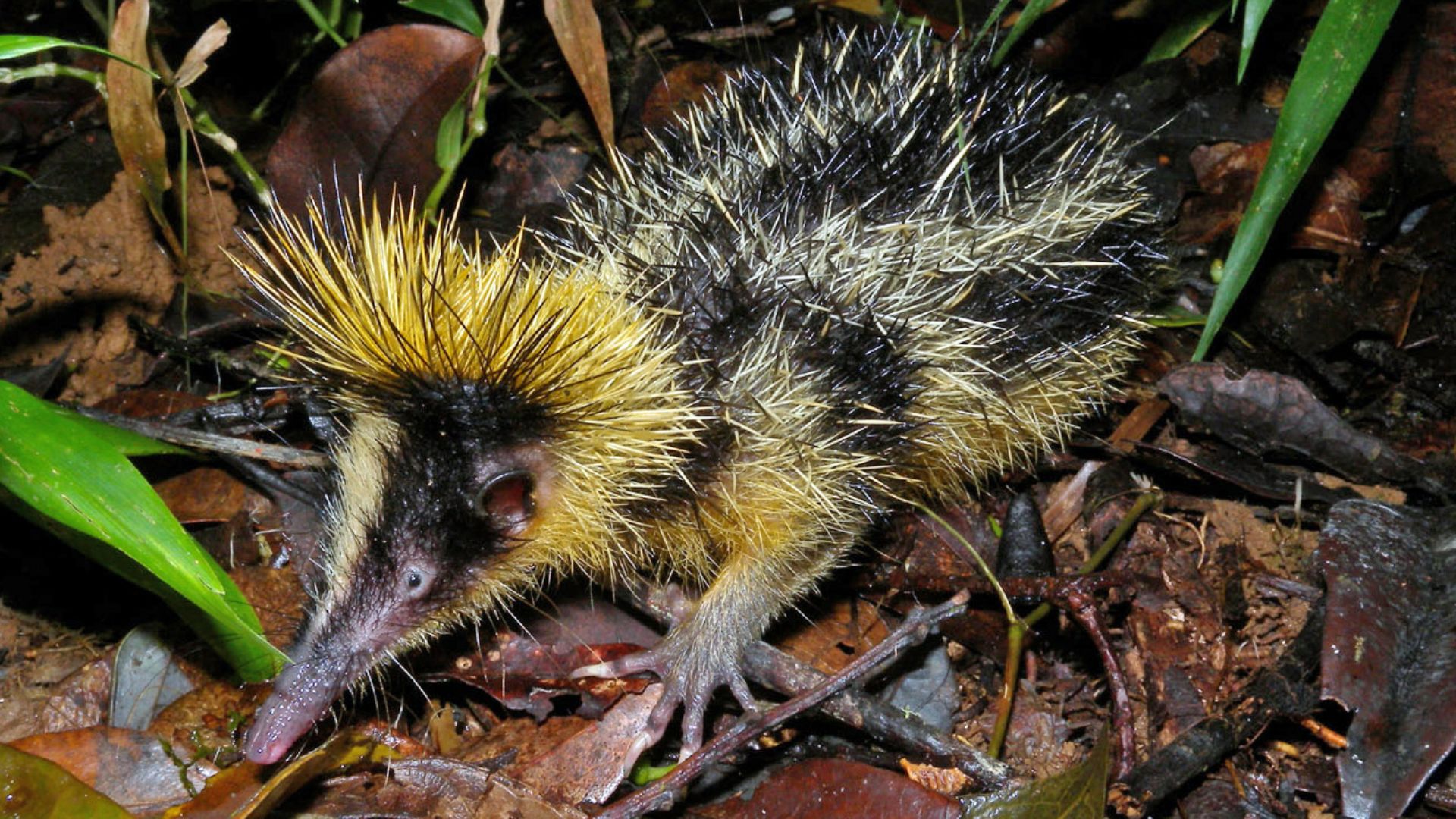 Frank Vassen, Wikimedia Commons
Frank Vassen, Wikimedia Commons
Lowland Streaked Tenrec (Cont.)
Individuals find this creature fascinating because it retains primitive features. The lowland-streaked tenrec has a cloaca (a single opening for reproduction and excretion) and maintains a low body temperature that fluctuates with its environment. These living fossils have stayed unchanged for years now.
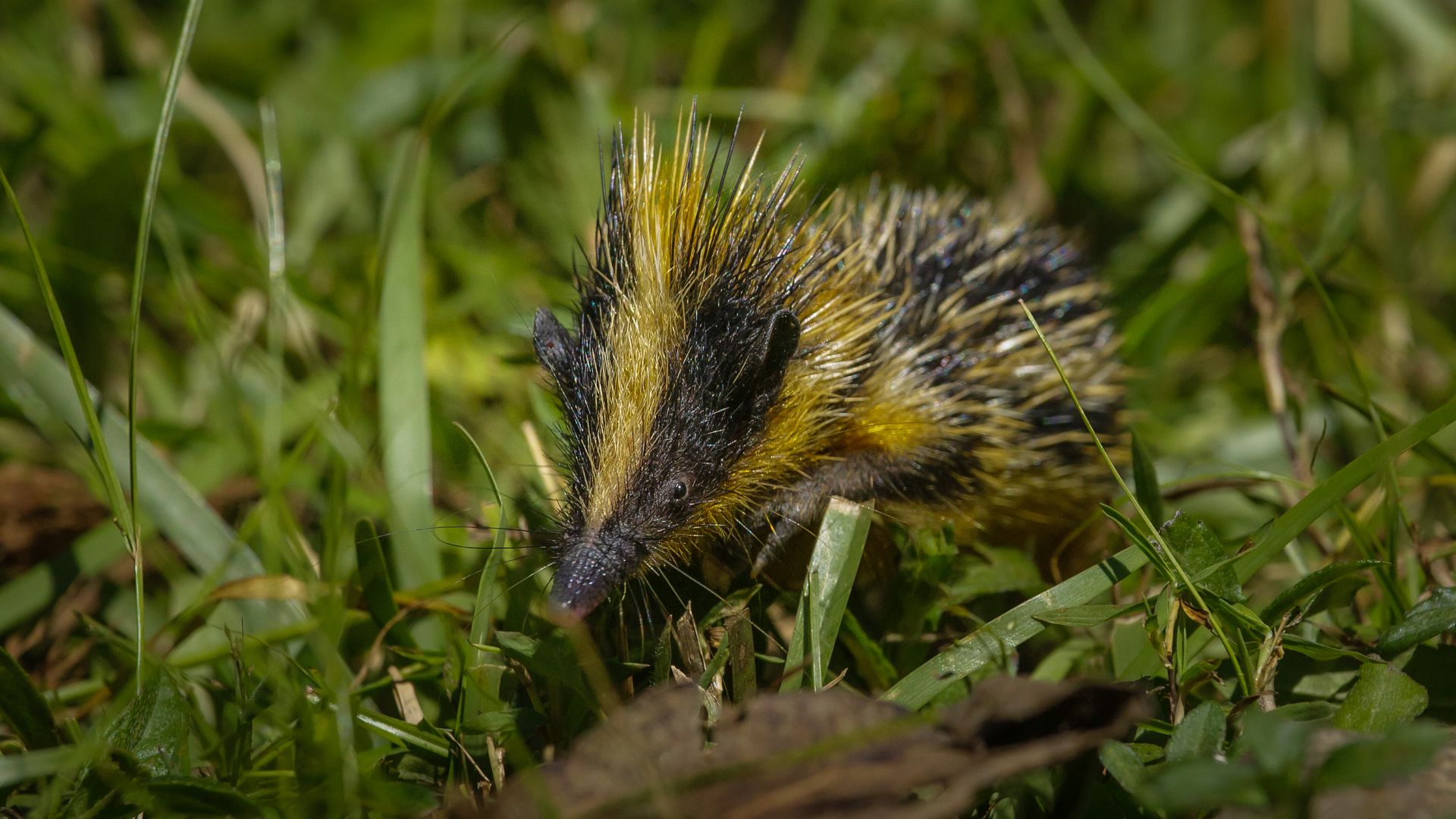 Thomas Fuhrmann, Wikimedia Commons
Thomas Fuhrmann, Wikimedia Commons
Siphonophore
Did you know that the world's longest animal isn't the blue whale? Yes. It's the siphonophore which reaches lengths of up to 170 feet. Discovered during deep-sea exploration off Australia's coast in 2020, this ribbon-like creature is a colonial organism composed of thousands of individual zooids.
Siphonophore (Cont.)
Each zooid is specialized for different functions like feeding, reproduction, or defense. The most spectacular adaptation is their hunting technique. They form spiral-shaped "nets" that trap fish and crustaceans with deadly, paralyzing stinging cells similar to those of their jellyfish relatives.
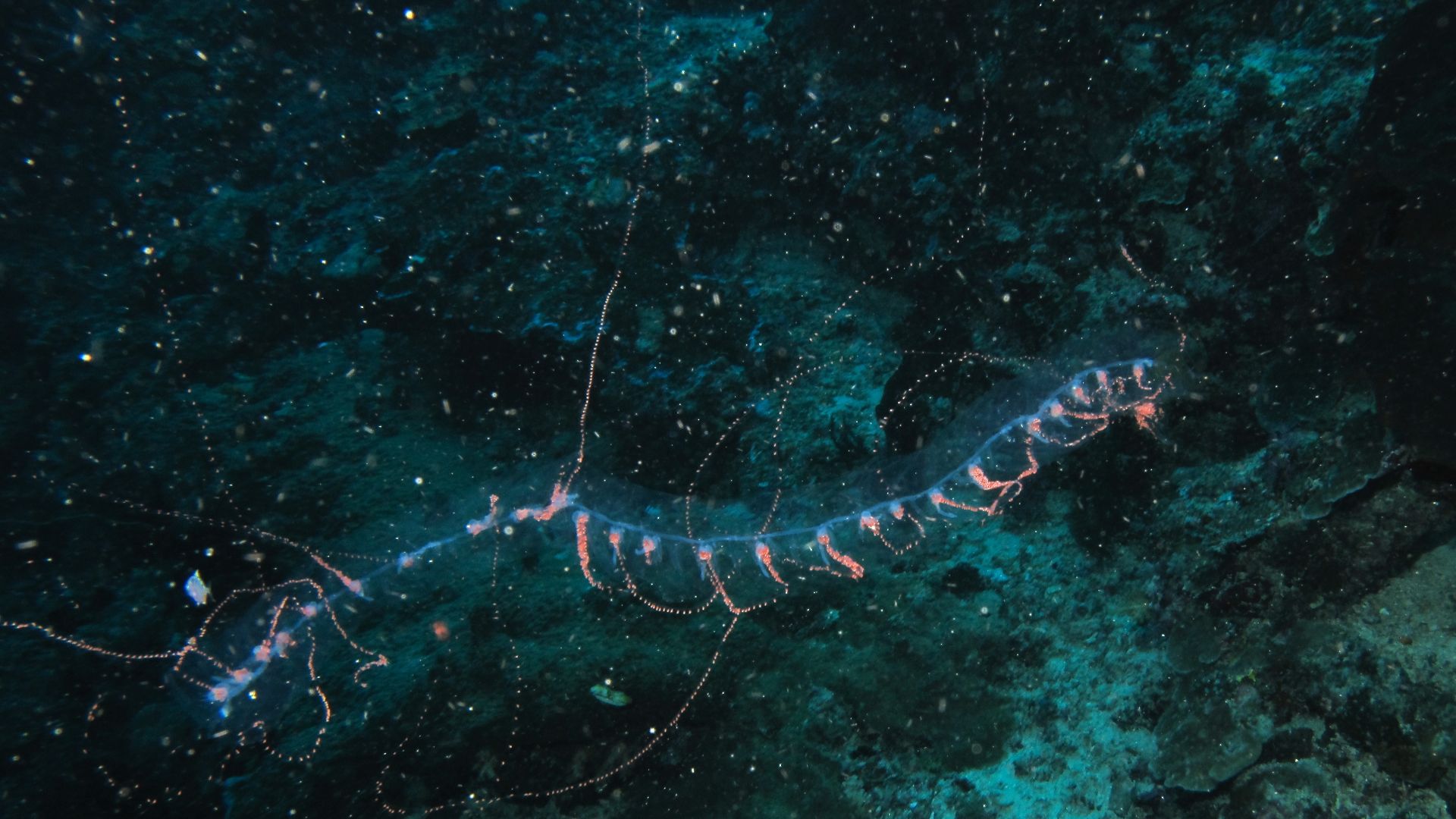 Bernard DUPONT from FRANCE, Wikimedia Commons
Bernard DUPONT from FRANCE, Wikimedia Commons
Sea Pig
The scientific name Scotoplanes globosa doesn't quite capture the weird charm of the sea pig. It is a deep-sea cucumber that kind of waddles around on its tube-like legs. These pink, see-through creatures suck in water to keep their shape and can quickly deflate when they feel threatened.
Sea Pig (Cont.)
But this cool trick doesn’t work if they end up in shallower water. Living in the deepest parts of all major oceans, sea pigs are actually important ecosystem engineers. Their feeding behavior of extracting organic particles from seafloor mud helps cycle nutrients in the abyssal environment.
 Weird and Wonderful: Sea pigs by MBARI (Monterey Bay Aquarium Research Institute)
Weird and Wonderful: Sea pigs by MBARI (Monterey Bay Aquarium Research Institute)
Vaquita
Now the world's most endangered marine mammal, with less than 10 individuals remaining, this tiny porpoise with distinctive black eye rings and lips has never been photographed alive in the wild until recently. It is said to inhabit waters near heavily populated areas.
 Save the Vaquita Petition by Porpoise Conservation Society
Save the Vaquita Petition by Porpoise Conservation Society
Vaquita (Cont.)
Mexican fishermen long spoke of a mysterious small porpoise with "raccoon eyes" before science confirmed its existence. Even after discovery, its extreme rarity meant decades passed without photographic evidence. As per reports, the vaquita lives in murky waters of the Gulf of California.
 Save the Vaquita Petition by Porpoise Conservation Society
Save the Vaquita Petition by Porpoise Conservation Society
Glaucus Atlanticus
Drifting upside-down on the ocean's surface tension, this tiny mollusk, rarely exceeding 3 centimeters in length, possesses a remarkable survival strategy. Apart from feeding on venomous Portuguese man o' war tentacles, it can harvest their stinging cells for its personal defense needs.
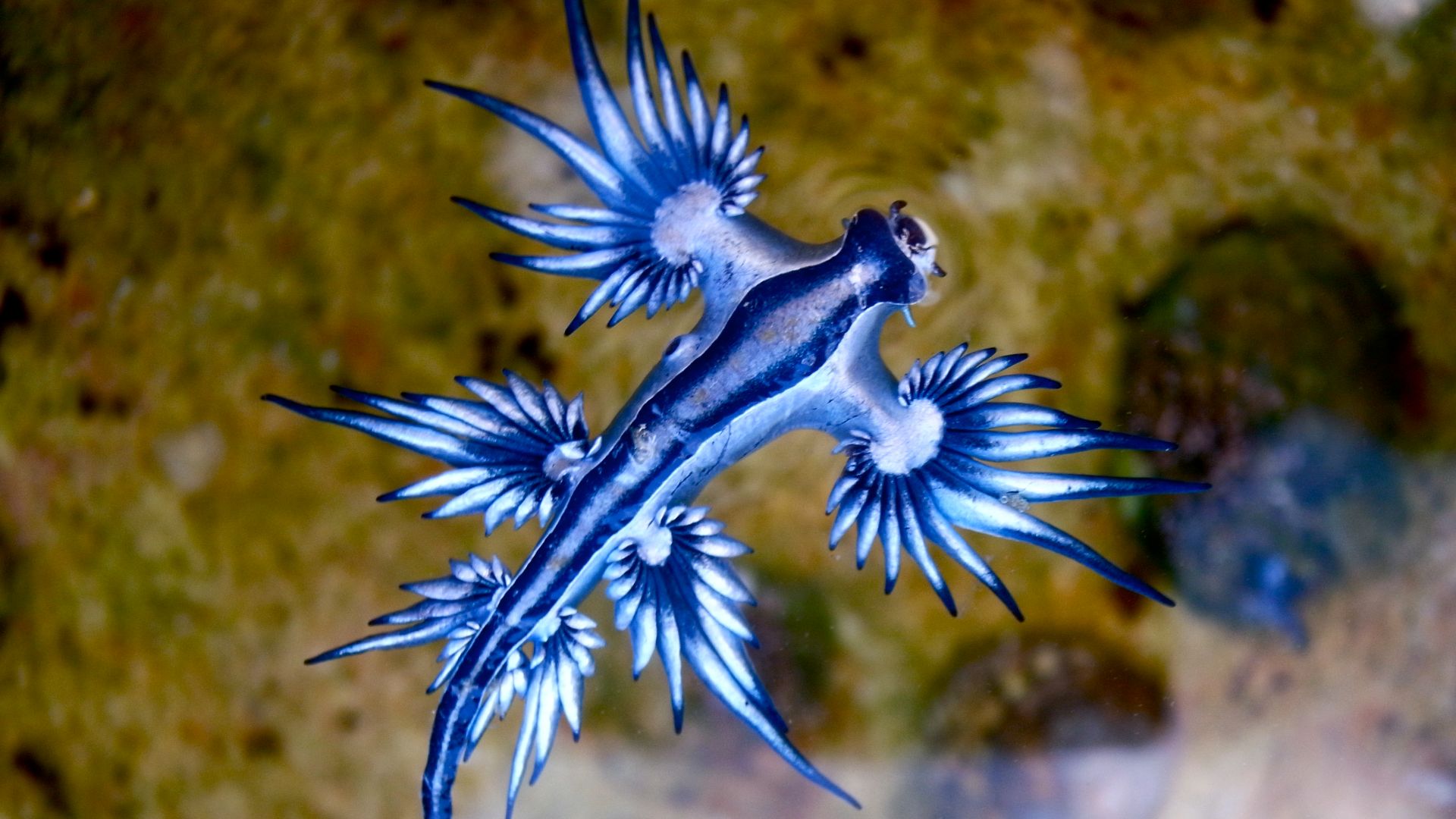 Sylke Rohrlach from Sydney, Wikimedia Commons
Sylke Rohrlach from Sydney, Wikimedia Commons
Glaucus Atlanticus (Cont.)
While the vivid blue dorsal surface camouflages against the ocean viewed from above, its silver underside joins with the sky when seen from below. Research published in 2016 found that these sea slugs can survive without food by shrinking their bodies up to 75% in size.
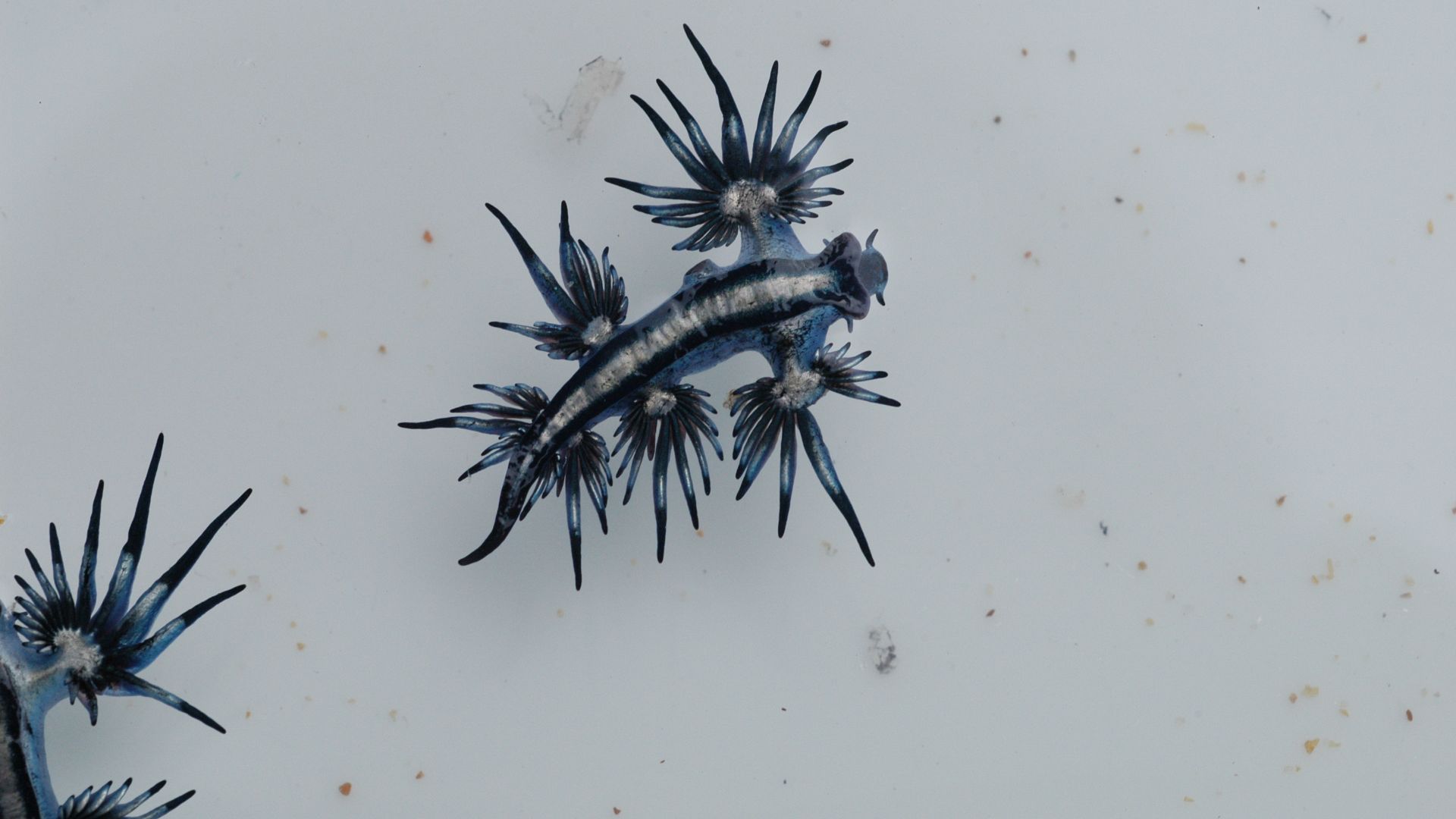 Doug Beckers from Macmasters Beach, Australia, Wikimedia Commons
Doug Beckers from Macmasters Beach, Australia, Wikimedia Commons
Tarsier
Interestingly, the tarsier can rotate its head 180 degrees in each direction, giving it a full 360-degree field of vision while remaining perfectly still. These nocturnal primates from Southeast Asian islands are the only completely carnivorous primates, feasting exclusively on insects and small vertebrates.
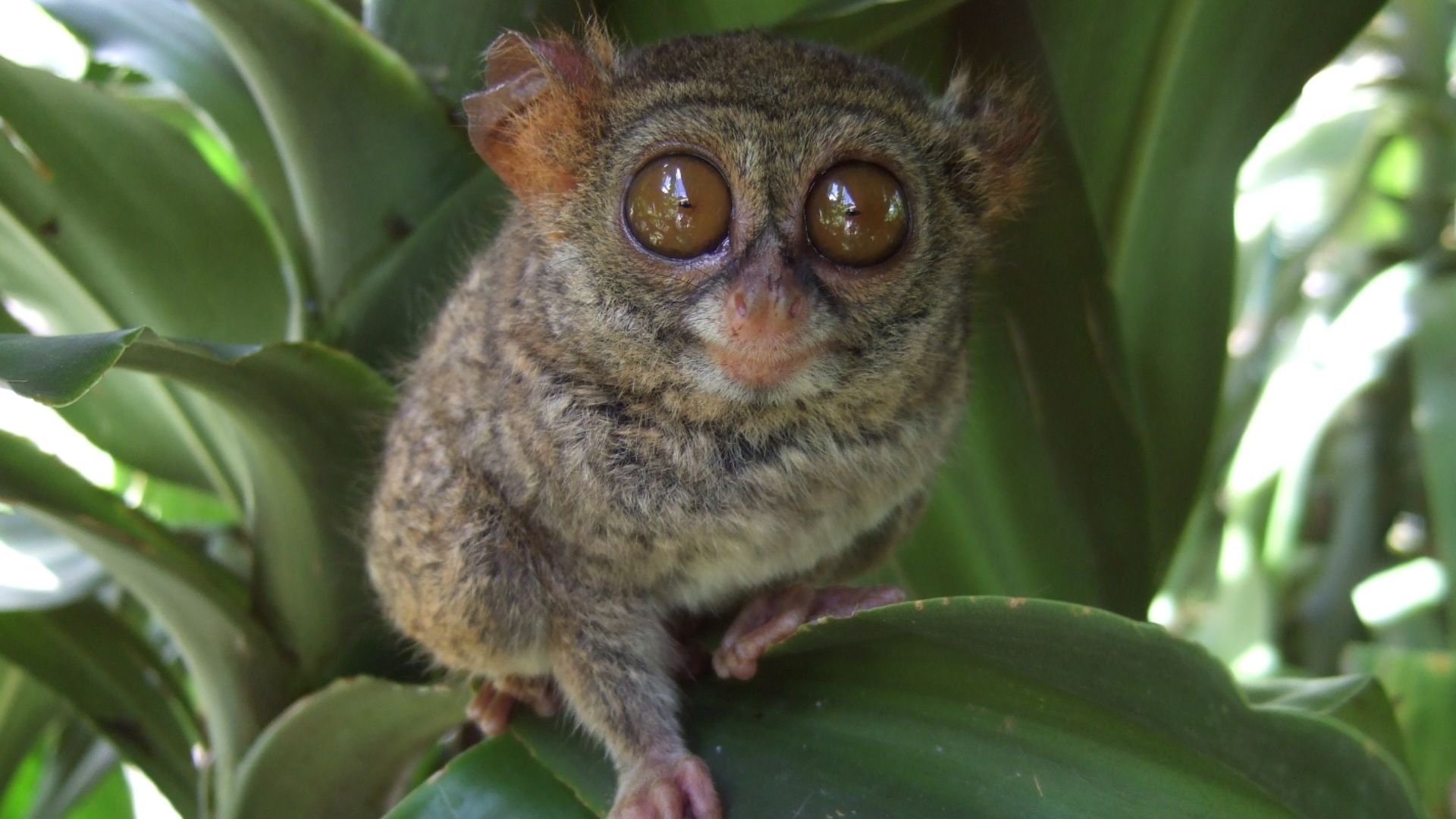 Sakurai Midori, Wikimedia Commons
Sakurai Midori, Wikimedia Commons
Tarsier (Cont.)
Weighing around 100-150 grams, tarsiers possess a high brain-to-body mass ratio. Elongated ankle bones and leg muscles facilitate their extraordinary leaping ability. Despite being studied for centuries, researchers only recently discovered that tarsiers communicate using pure ultrasonic vocalizations, which are completely inaudible to human ears.
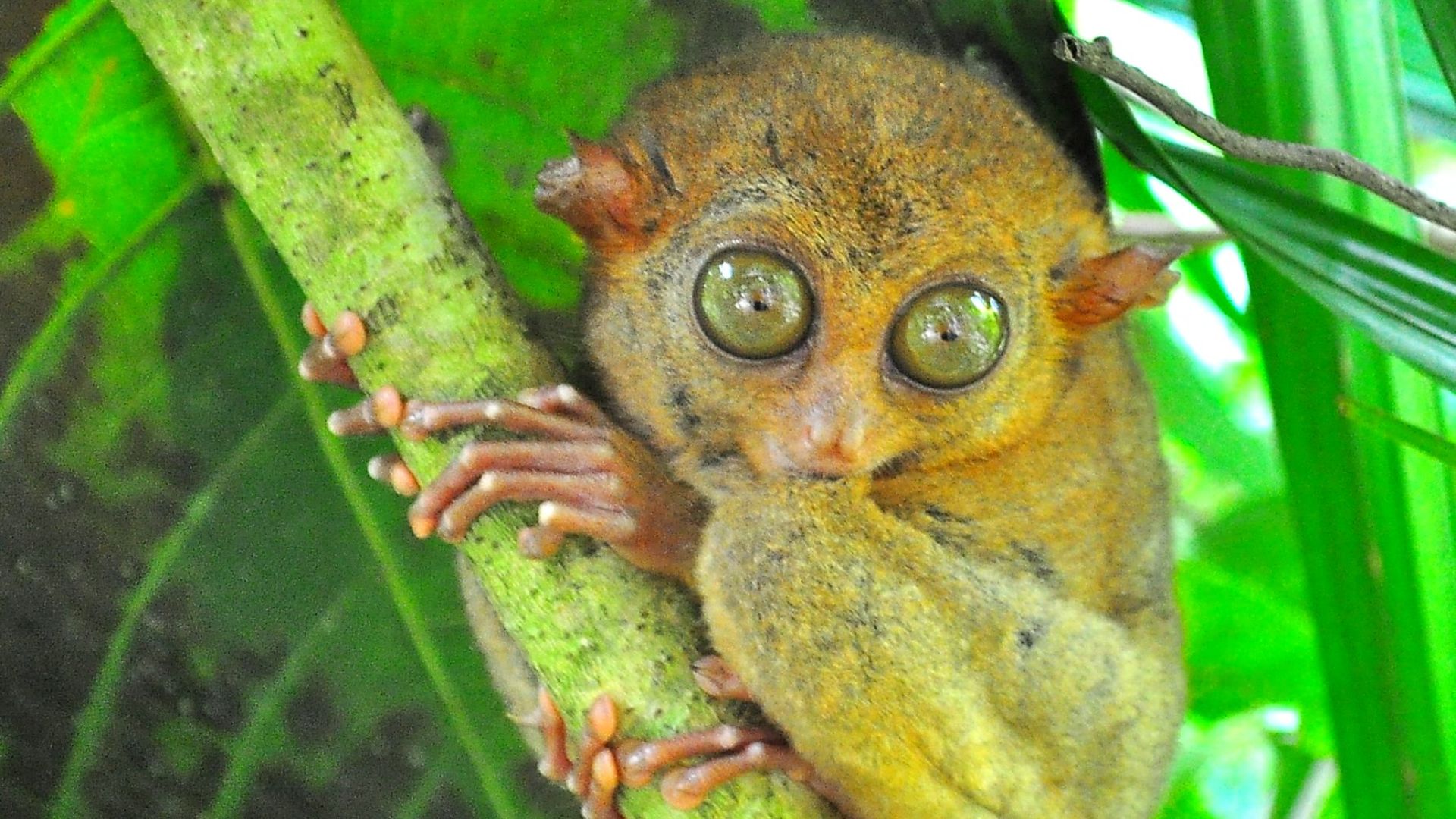 whologwhy from Philippines, Wikimedia Commons
whologwhy from Philippines, Wikimedia Commons
Hagfish
When threatened, the hagfish produces enough mucus to turn a 5-gallon bucket of water into gel within seconds. This primordial creature has survived relatively unchanged, outlasting dinosaurs and countless other species. Its defensive slime contains thousands of microscopic fibers stronger than nylon when stretched.
Hagfish (Cont.)
Lacking both jaws and vertebrae, these ocean scavengers can tie themselves into knots. These knots are then used to provide leverage when feeding on carcasses and to clean slime from their bodies. Perhaps most remarkably, hagfish can absorb nutrients directly through their skin.
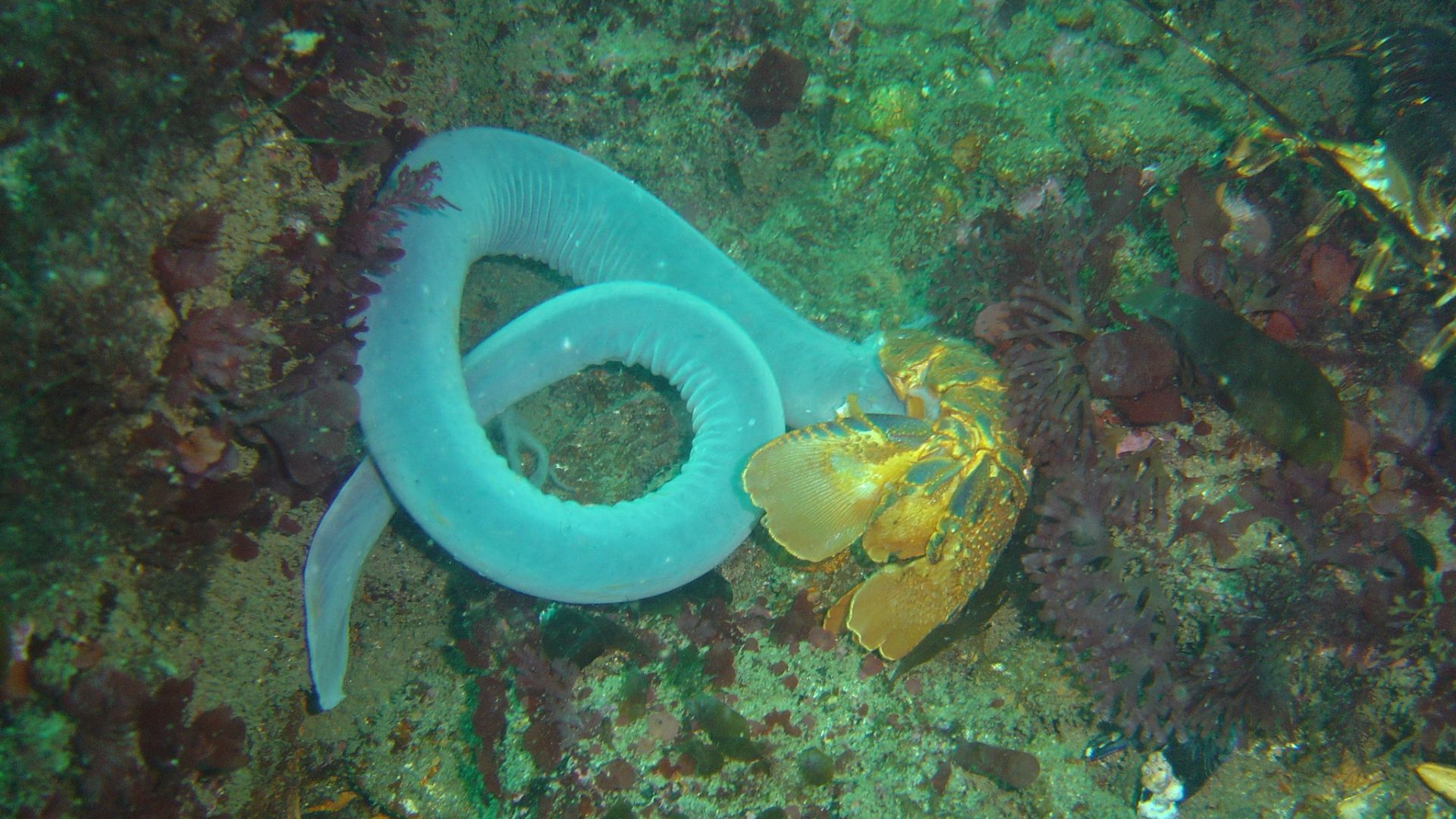 Peter Southwood, Wikimedia Commons
Peter Southwood, Wikimedia Commons
Red-Lipped Batfish
Unlike most fish, the red-lipped batfish of the Galapagos Islands prefers walking to swimming. Its pectoral fins have evolved into leg-like appendages. In turn, it allows the fish to "walk" across the ocean floor, searching for small crustaceans, mollusks, and other bottom-dwelling prey.
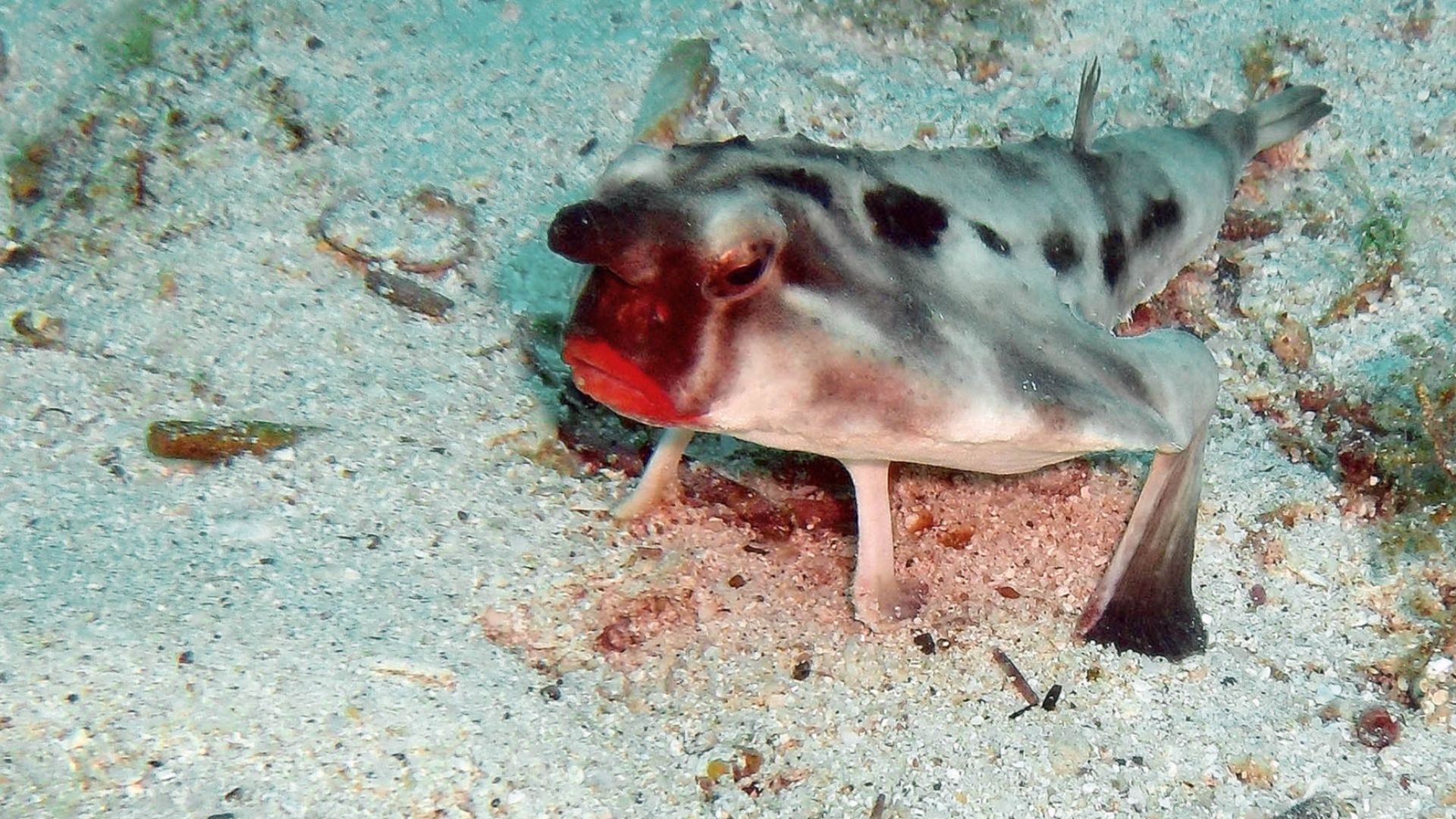 Rein Ketelaars, Wikimedia Commons
Rein Ketelaars, Wikimedia Commons
Red-Lipped Batfish (Cont.)
Those famous bright red lips, which look like poorly applied lipstick, are actually a key feature for breeding success. As a relative of the frogfish, this species possesses a modified dorsal fin called an illicium, essentially a fishing rod complete with a lure.
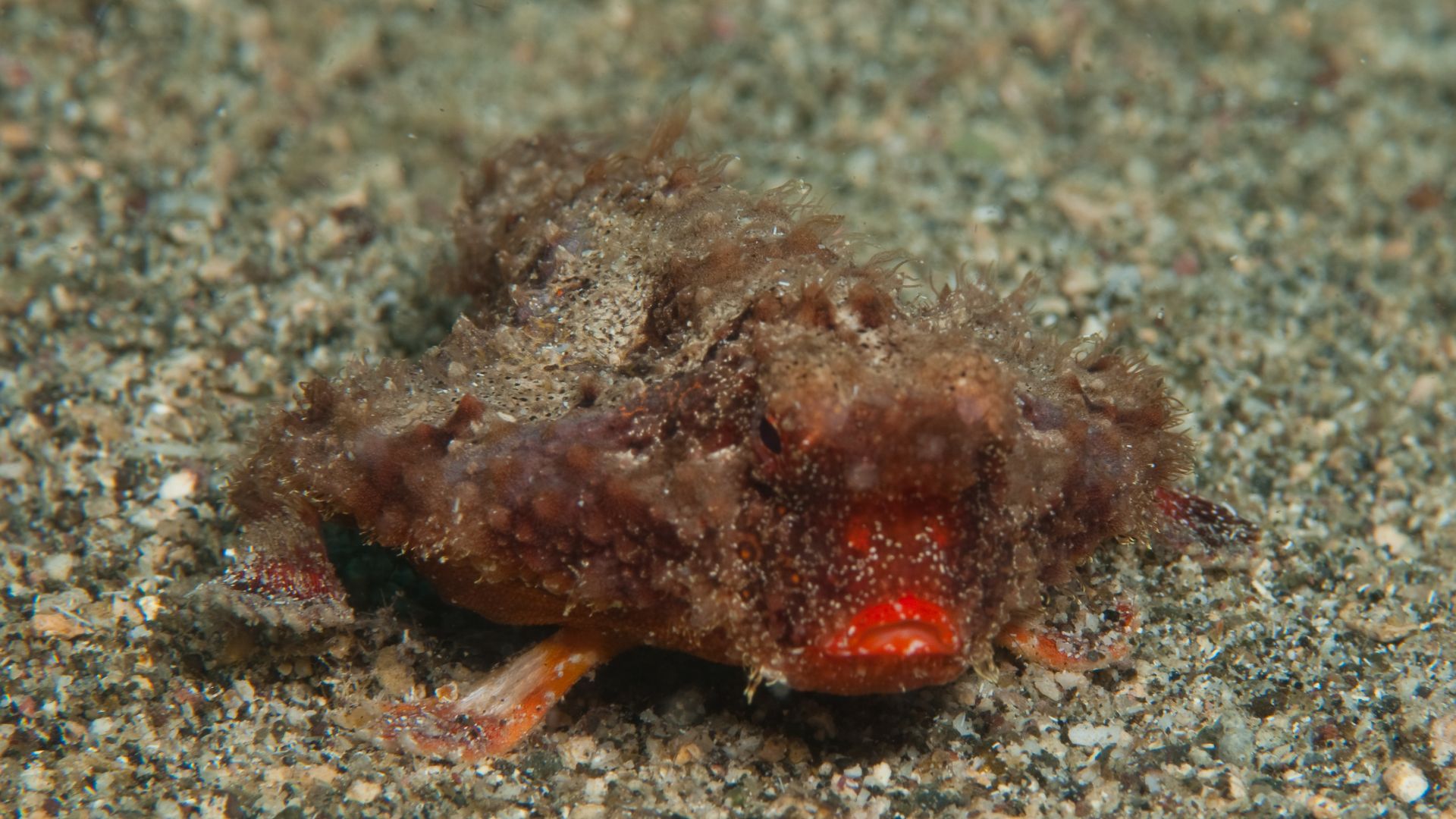 Barry Peters`, Wikimedia Commons
Barry Peters`, Wikimedia Commons
Great Potoo
The great potoo is a master of disguise. It blends in with tree trunks so well that it just looks like a broken branch during the day. This nighttime bird from Central and South America has some fancy adaptations, like special slits under its eyelids.
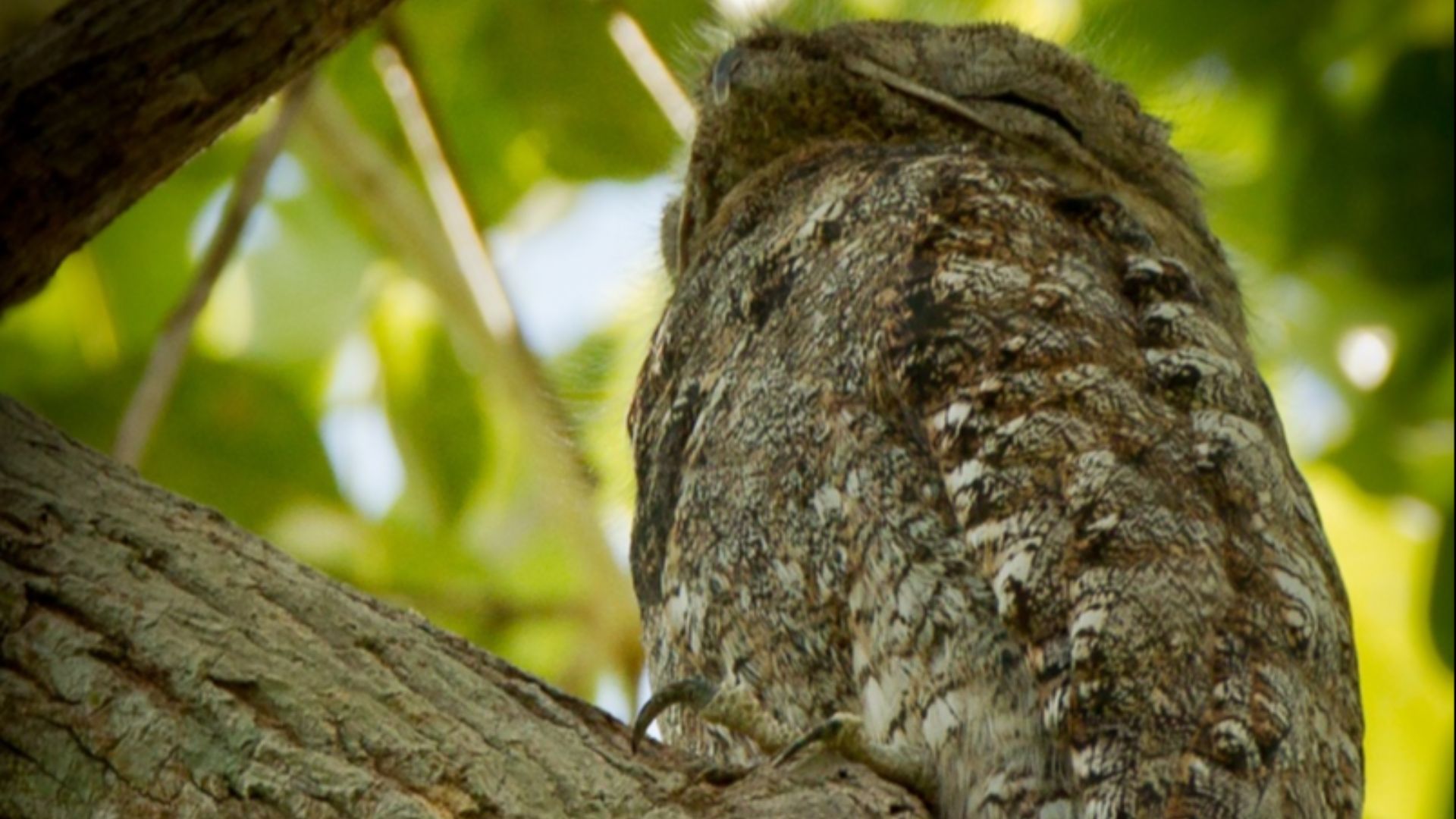 Bart van Dorp, Wikimedia Commons
Bart van Dorp, Wikimedia Commons
Great Potoo (Cont.)
It’s an impressive ambush predator with a vestigial oil gland. Most birds use this to waterproof their feathers, but the potoo has lost this ability over evolutionary time. Instead, it has developed specialized feathering patterns that mimic tree bark and lichen.
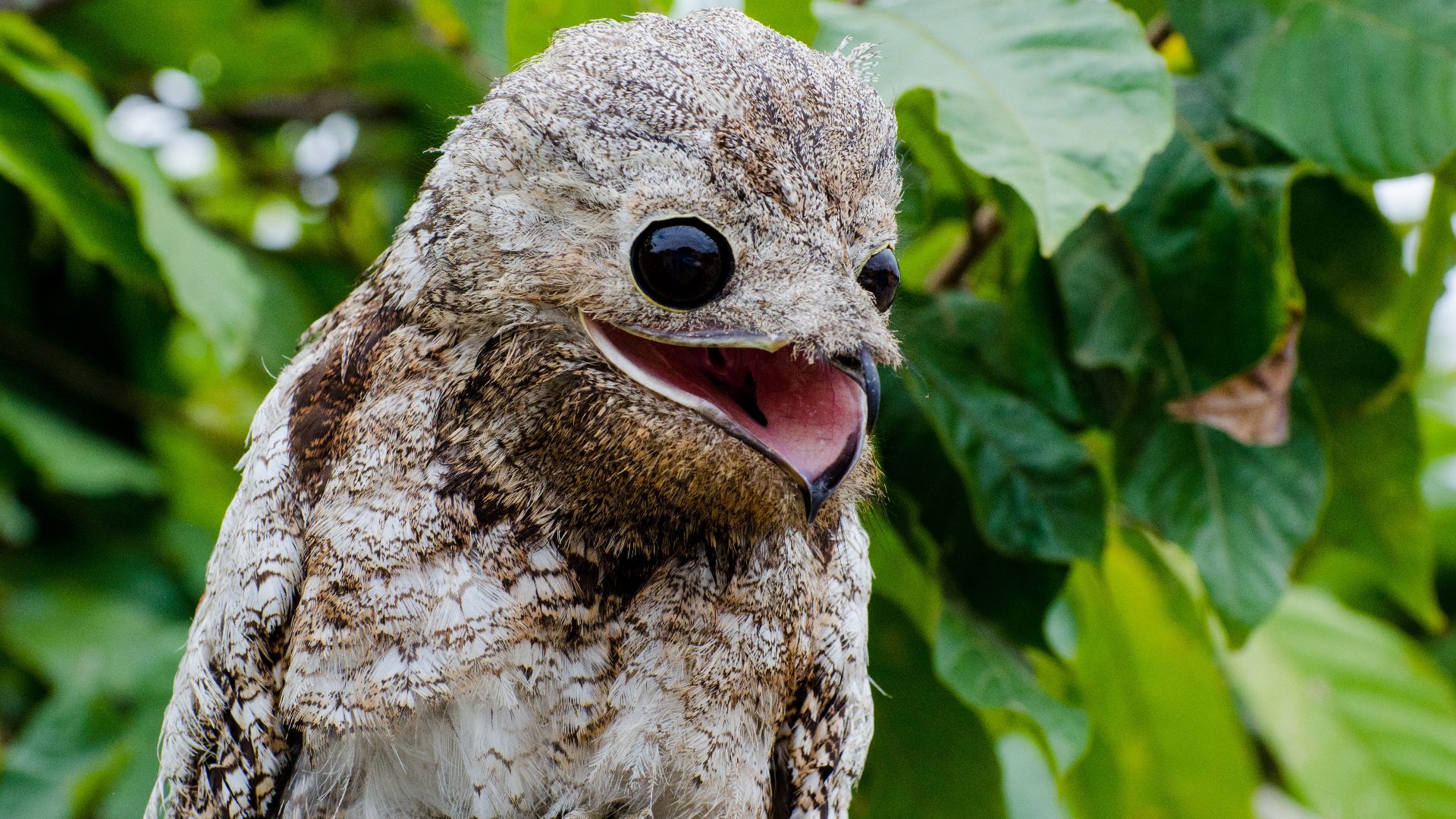 Allissondias, Wikimedia Commons
Allissondias, Wikimedia Commons
Sarcastic Fringehead
Among the strangest here is the sarcastic fringehead's battle ritual. When confronted, this fish opens a huge, multicolored mouth that can enlarge many times its typical size. Territorial disputes are resolved through "mouth wrestling," in which contestants force their enlarged jaws against one another.
 Sarcastic Fringehead Fights For Territory | Life | BBC Earth by BBC Earth
Sarcastic Fringehead Fights For Territory | Life | BBC Earth by BBC Earth
Sarcastic Fringehead (Cont.)
Hidden within rocky crevices along the Pacific coast from San Francisco to Baja California, these fish rarely exceed 12 inches in length. Marine biologists debate the origin of their strange name. However, some suggest it refers to their aggressive demeanor.
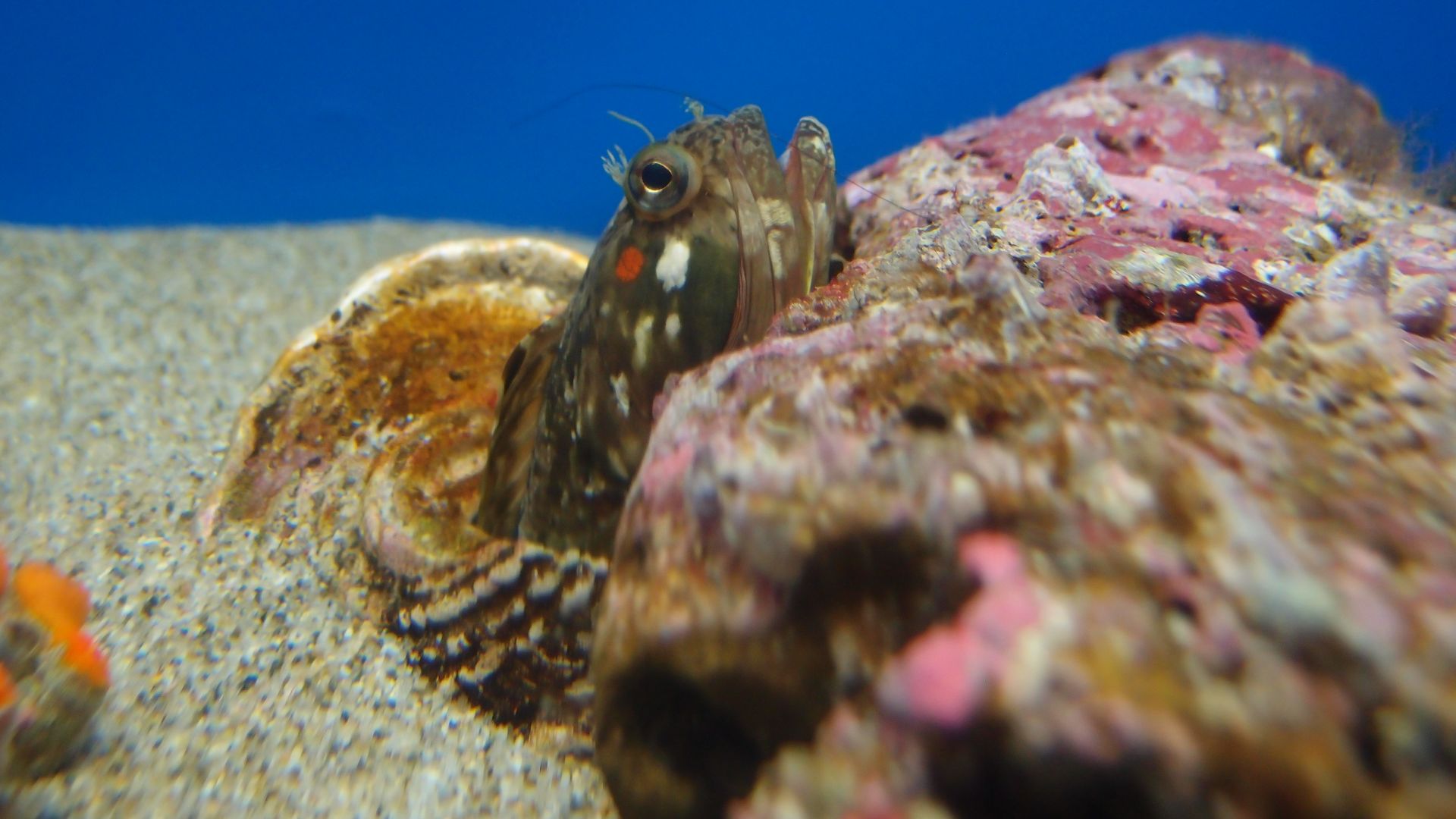 Guilhem Vellut from Tokyo, Japan, Wikimedia Commons
Guilhem Vellut from Tokyo, Japan, Wikimedia Commons
Mantis Shrimp
Engineers study the mantis shrimp's hammer-like claws, which accelerate with the force of a 0.22 caliber bullet. When they collapse, they create cavitation bubbles that produce light, heat, and sound. These underwater punches reach speeds of 23 meters per second and can even break aquarium glass.
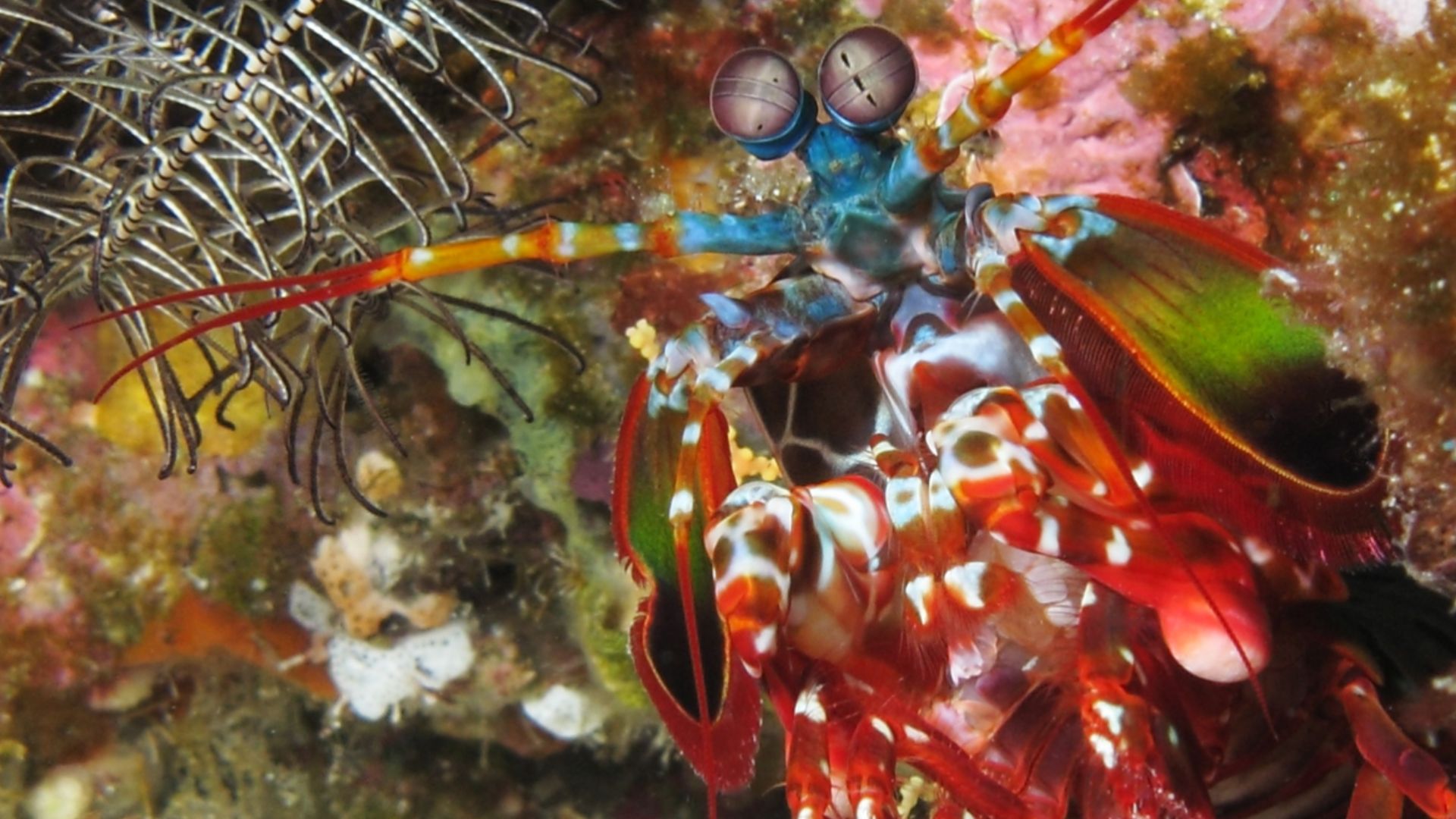 Alexander Vasenin, Wikimedia Commons
Alexander Vasenin, Wikimedia Commons
Mantis Shrimp (Cont.)
While mankind have 3 types of color-receptive cones, mantis shrimp have 16 different photoreceptor types that can detect ten times more color than human eyes. This is inclusive of ultraviolet light. Studies published in Current Biology revealed that these creatures can even see polarized light.
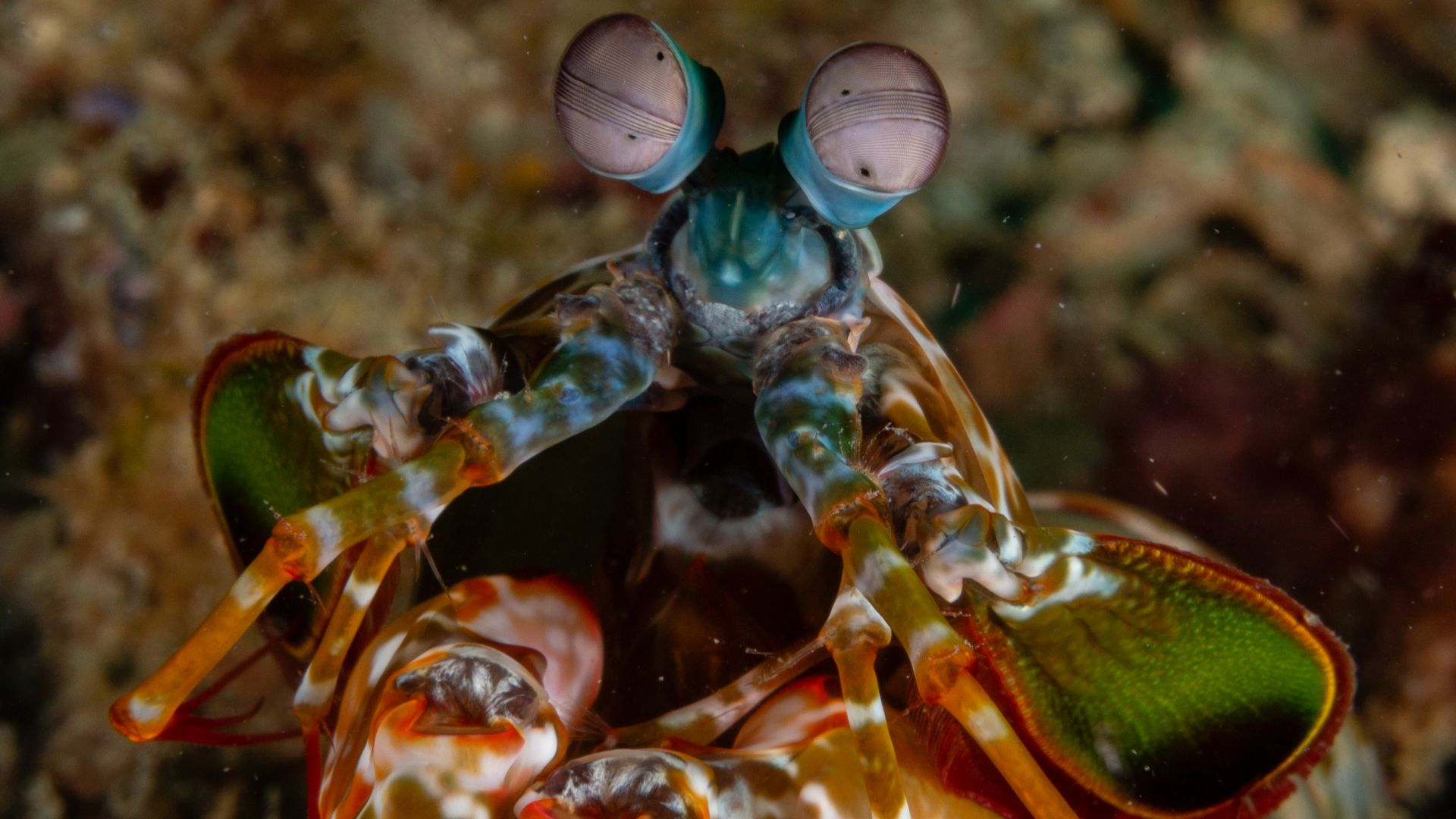 Daniel Sasse, Wikimedia Commons
Daniel Sasse, Wikimedia Commons
Saola
Known as the "Asian unicorn," the saola remained unknown to Western science until 1992. This was when researchers in Vietnam found skulls with unusual horns in hunters' homes. This deer-like mammal with long, parallel horns was the first large mammal discovered in over 50 years.
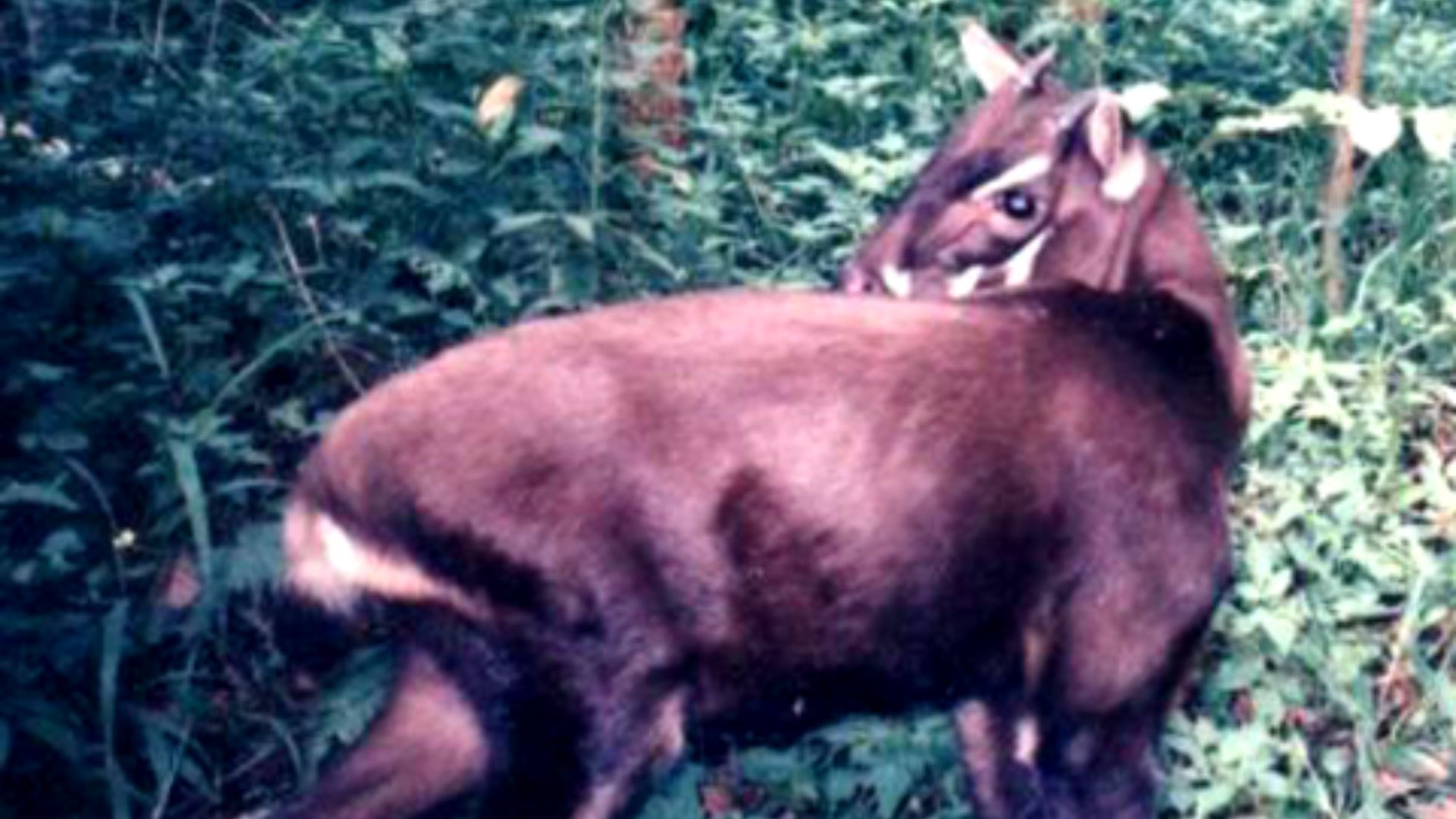 The original uploader was Silviculture at Vietnamese Wikipedia., Wikimedia Commons
The original uploader was Silviculture at Vietnamese Wikipedia., Wikimedia Commons
Saola (Cont.)
With possibly fewer than 100 individuals remaining, the saola demonstrates how large mammals can evade scientific detection for centuries. It has striking white facial markings and dark brown or reddish coats. Large maxillary glands on its muzzle may be used for marking territory or attracting mates.
 Extremely Rare 'Asian Unicorn' Sighted In Vietnam by Newsy Science
Extremely Rare 'Asian Unicorn' Sighted In Vietnam by Newsy Science
Halitrephes Jelly
In 2018, deep-sea explorers from the Nautilus expedition filmed this incredible creature. When you shine a light on the Halitrephes jelly, its clear bell bursts into bright colors, kind of like a living firework. It lives at depths exceeding 3,000 feet.
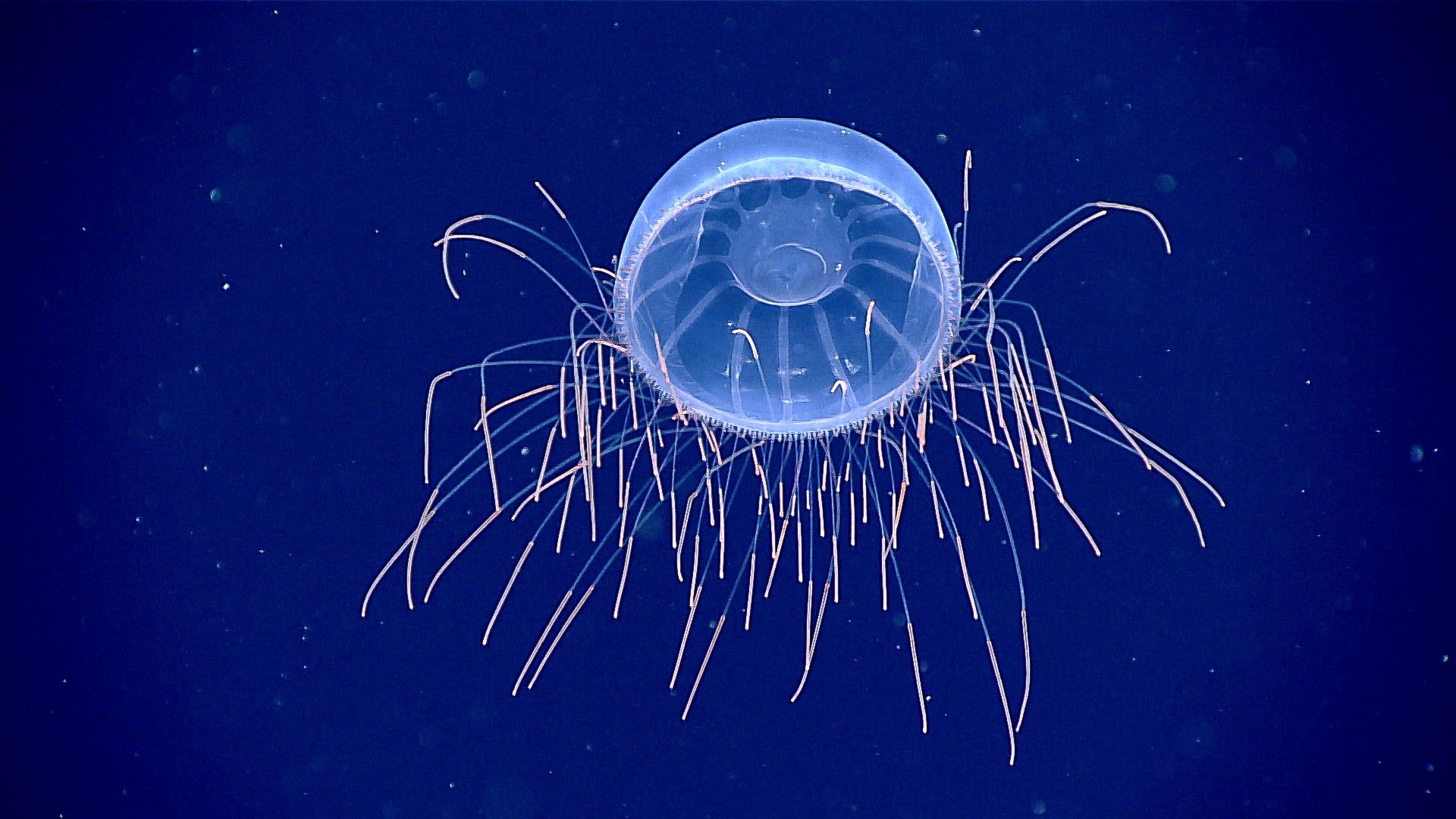 NOAA Office of Ocean Exploration and Research, Wikimedia Commons
NOAA Office of Ocean Exploration and Research, Wikimedia Commons
Halitrephes Jelly (Cont.)
Scientists estimate we've documented less than 5% of deep ocean species, making the abyssal zone a great analog for cryptozoology's undiscovered country. The species has been observed in diverse marine environments, including the Atlantic, Pacific, Mediterranean, Indo-Pacific, and Antarctic regions.
 A Burst of Deep Sea Fireworks: Halitrephes Jelly | Nautilus Live by EVNautilus
A Burst of Deep Sea Fireworks: Halitrephes Jelly | Nautilus Live by EVNautilus
Black-Spotted Cuscus
Indigenous peoples of New Guinea have long incorporated the black-spotted cuscus into their folklore. Besides, Western science only documented this marsupial in the 20th century. With vertical pupils like a cat and powerful clawed hands for climbing, this critically endangered creature blends almost chimeric characteristics.
Black-Spotted Cuscus (Cont.)
Their nocturnal lifestyle and preference for dense rainforest canopies have made it quite impossible for these animals to study in the wild. They have an unusual appearance, featuring thick fur ranging from white to golden orange and contrasted with black spots.
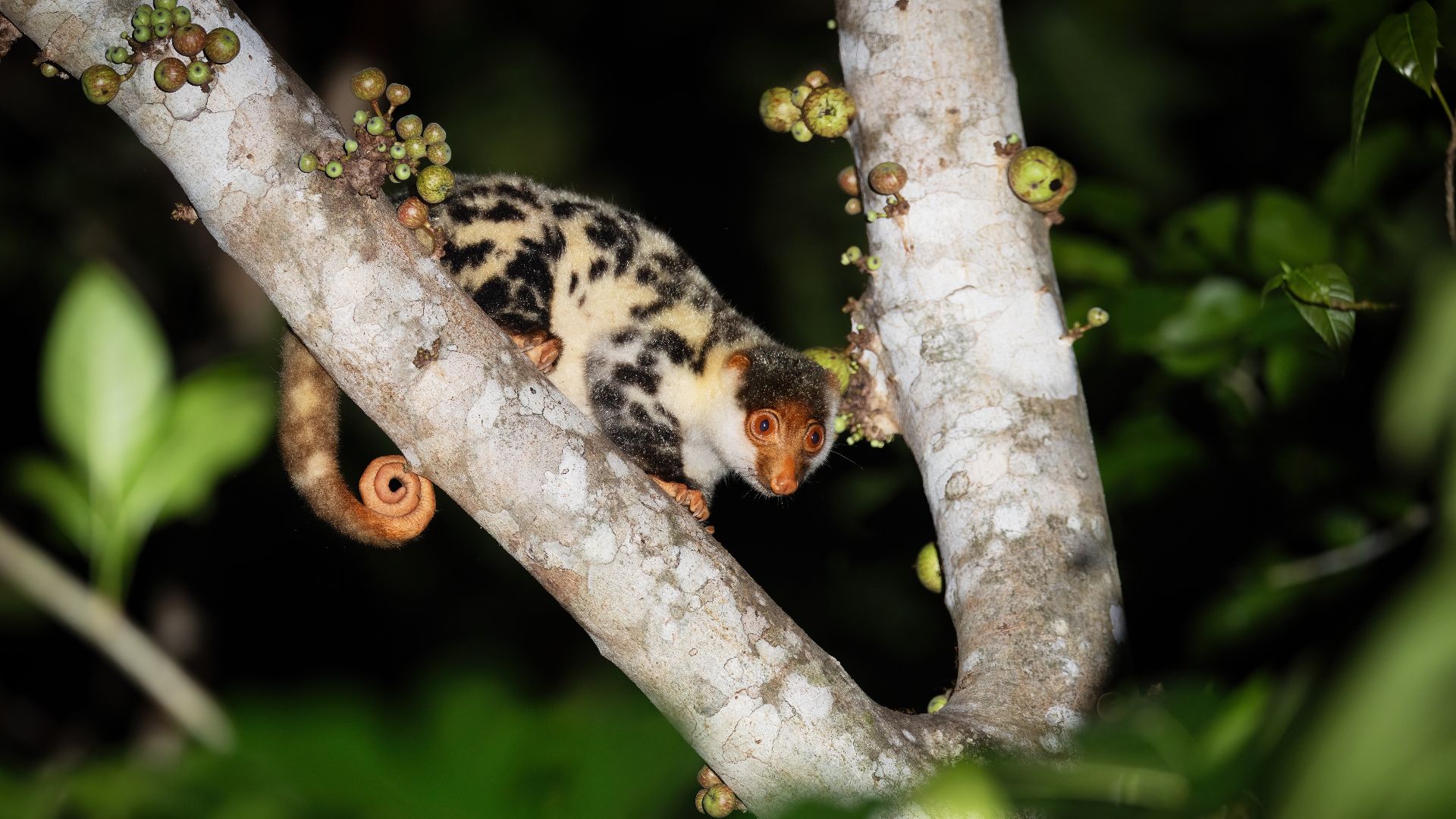 JJ Harrison, Wikimedia Commons
JJ Harrison, Wikimedia Commons
Giant Forest Hog
The biggest wild pig species was so hard to spot that it didn’t get a proper scientific description until 1904. This species could weigh up to 600 pounds and lived in parts of Africa that Europeans had already explored. Local hunters knew all about this huge animal.
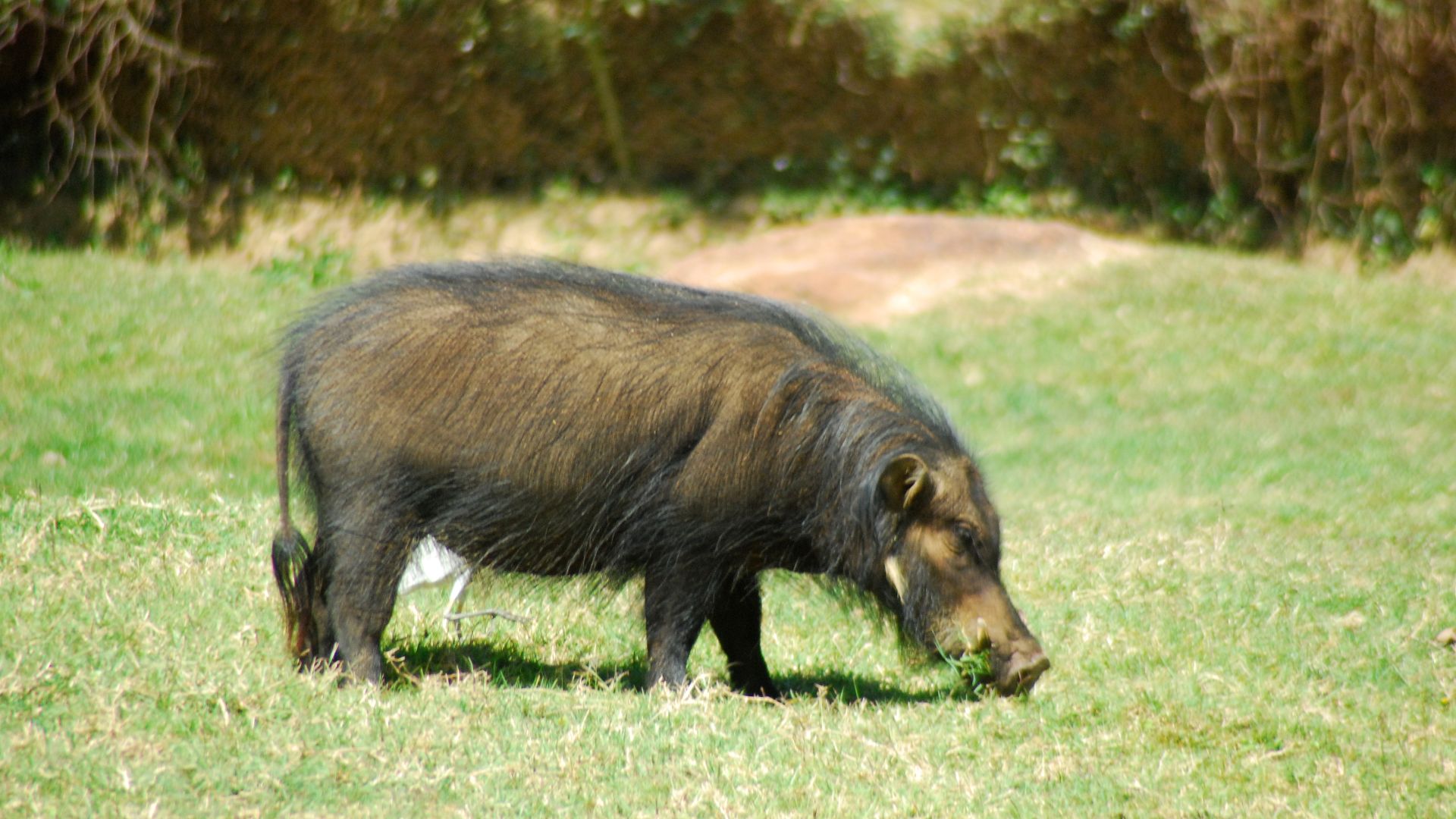 michell zappa from Sao Paulo, Brazil, Wikimedia Commons
michell zappa from Sao Paulo, Brazil, Wikimedia Commons
Giant Forest Hog (Cont.)
But, scientists thought they were just exaggerating until they finally got their hands on some real specimens. Using intelligence to evade detection, giant forest hogs create extensive tunnel systems in dense vegetation and remain motionless for hours when sensing human presence.
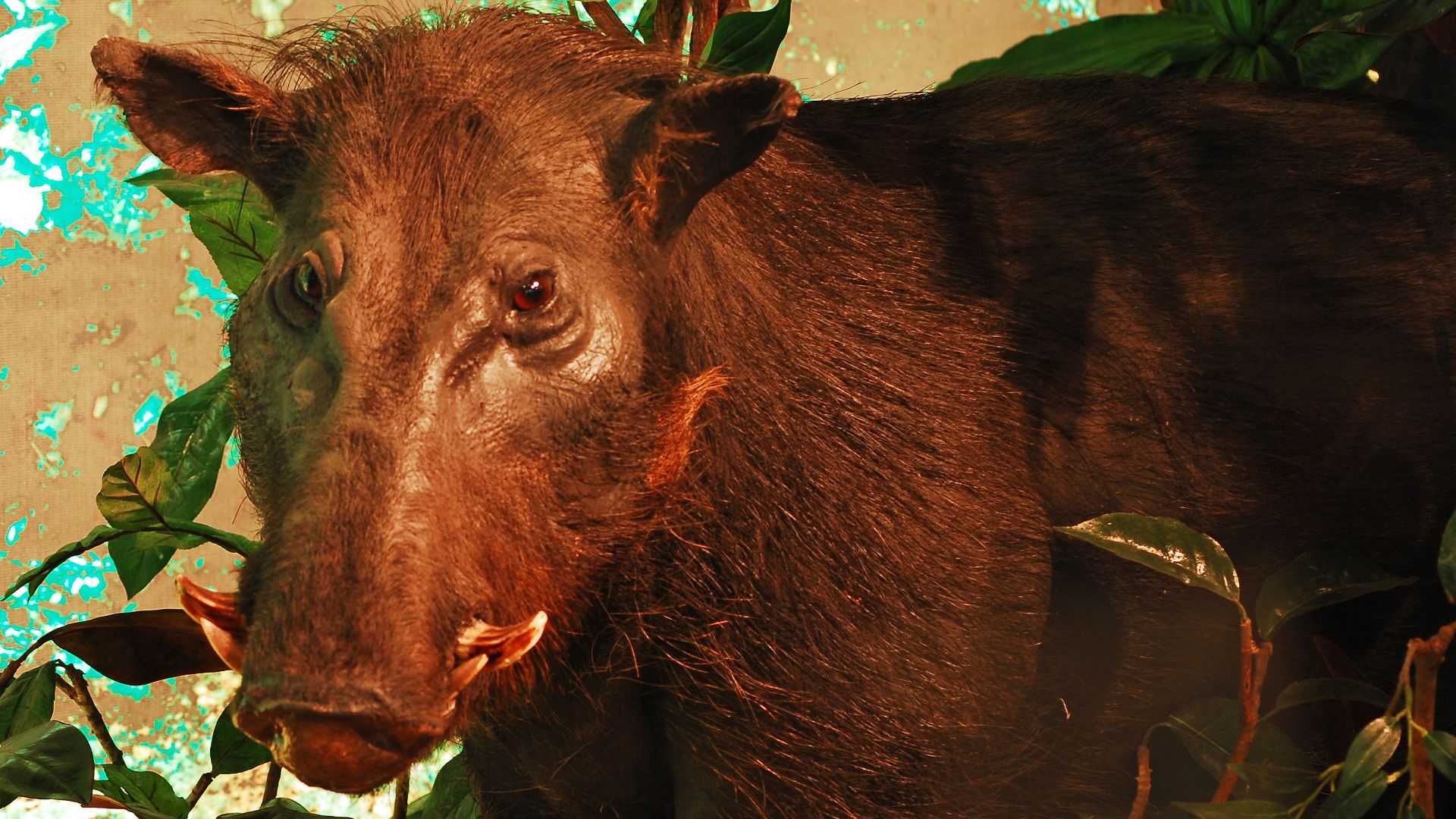 Wikipedia Loves Art participant
Wikipedia Loves Art participant

